 By Pepper Parr By Pepper Parr
BURLINGTON, ON January 25, 2013 So – Sandra Pupatello wins – then what happens?
First there will be a by-election to get her a seat in the Legislature. Then the Legislature will resume and Pupatello will show the province just what she is made of. This woman is a tiger – she doesn’t take prisoners.
She will eventually get the election she wants and wipe the floor with Tim Hudak. She will go to the public with a strong set of candidates – what will that mean to Burlington?
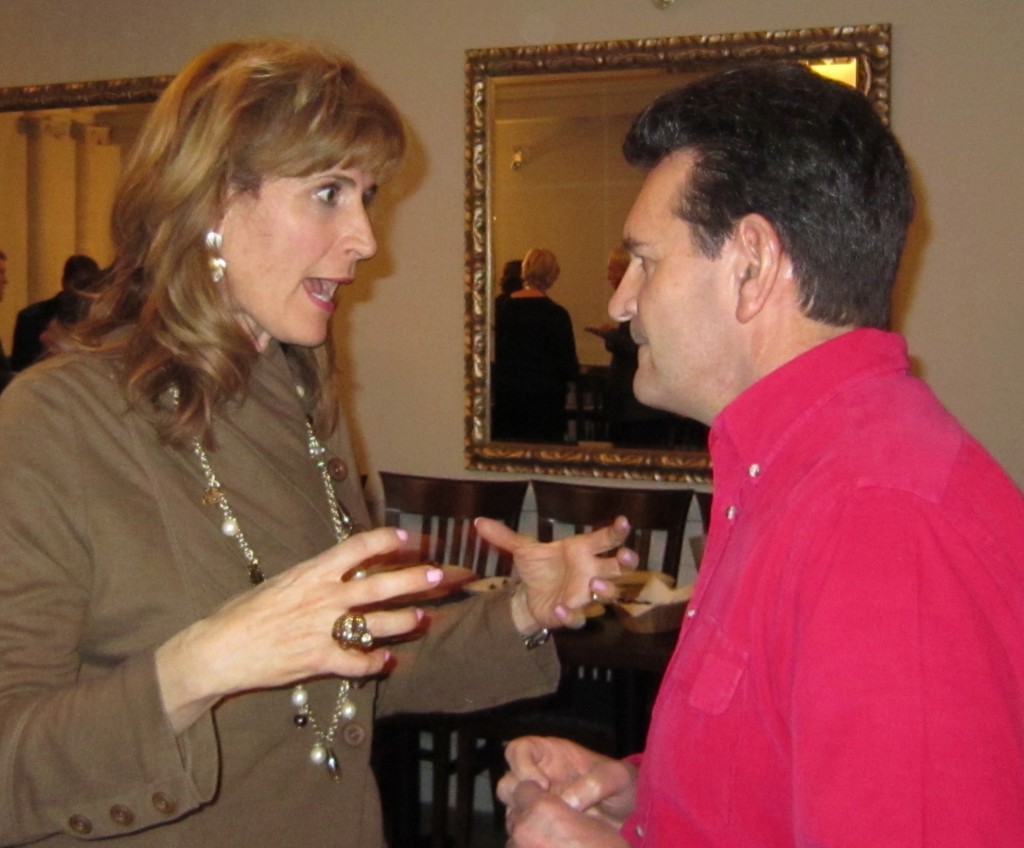 Provincial Liberal leadership delegate Sandra Pupatello meets Burlington’s Ward 1 Councillor Rick Craven. Could they work well together? Jane McKenna will want to brush up her resume. Burlington has two, maybe three potential candidates – one of whom can win the seat with a dynamic enough leader.
Ted McMeekin, the cabinet minister to the east of us and the go to guy when Burlington wants to be heard by the provincial government. He is supporting Kathleen Wynne because she might keep him in cabinet. Pupatello won’t invite McMeekin into the cabinet she forms.
There is an opportunity for McMeekin to run for Mayor of Hamilton – they will love him over there – but Mayor of the zoo on the other side of the Skyway may be more than McMeekin wants to take on.
Ted Chudleigh should hold his Halton seat which includes parts of northern Burlington . It would take someone who has done a lot of ground work to beat the man who knows his job, does his job and is well liked. He has high name recognition and there are no smears on his copy book.
Sandra for sure on Saturday – then let the games begin. Ontario has never seen a leader like this before.

 By Pepper Parr By Pepper Parr
BURLINGTON, ON January 24. 2013 It was back in 1986, when Roly Bird was Mayor of the city. At that time there was a regular Mayor’s Breakfast – an event that gave the wheelers and dealers and wanna be’s an opportunity to get together and network – they didn’t call it that then – it was just the way local politics was done.
Someone came up with the idea of having the Mayor give an annual address. They needed a name for it and decided they would model it after the State of the Nation address used in the United States. Burlington was keeping one step ahead of Oakville which still have Mayor’s Breakfasts.
Burlington has been doing this ever since. This morning, on a crisp Canadian winter day, more than 400 people drove out to the convention centre on Burloak, drove around looking for a parking spot and did what Roly Bird introduced them to back in ’86; get caught up on what’s happening at city hall.
These State of the City addresses gives the Mayor a chance to trot out the list of things that have been done – sort of like a shareholders meeting where all those holding preferred shares get to enjoy their dividend.
This event is put on by the Mayor; his office controls the flow and the event. No questions get asked and you’re given phrase after phrase of the kind of stuff only a public relations specialist can write.
On balance Burlington is in good shape. At some point the people at city hall are going to stop trotting out all the MoneySense magazine ratings. It is a fine city but we seem to have let ourselves be defined by our geography. The “gem” or the “jewel” of a waterfront (with a pier that is coming in at three times it original cost) and an Escarpment that makes the city both rural and suburban at the same time. The city is not yet at that point where it can say it is urban or urbane.
We now know that the property either side of the QEW is our Prosperity Corridor and we were assured that city council will approve the Official Plan and the rezoning that is going to be needed to get IKEA into the property it has optioned on the North Service Road.
Council will pass the changes to the Official Plan and give IKEA the rezoning it wants and it’s then a done deal, said the Mayor except for three words that are laden with possible very serious problems. Goldring mentioned “two other processes” that we must go through – the Regional government and the Conservation Authority.
Region because Walkers Line is a Regional Road that is nearing capacity and the Conservation Authority because of a creek that is on the eastern edge of the property.
While Burlington wants the IKEA move to happen – the Region isn’t as close to the issue and are not facing the same pressure. There are 1 million visits to IKEA now – making it the city’s biggest tourist attraction (which got the only laugh Goldring was going to get with this address). The new location is expecting to get 1.5 million visitors annually. Walkers Line in its current form cannot handle that traffic and the two lanes that make up the North Service Road certainly can’t handle the traffic going into the location.
THE QEW cannot be made narrower so is any width for the North Service Road going to come out of the land IKEA has optioned? The next problem then is the railway line at the north side of the property. Is IKEA’s hope to make their site wider?
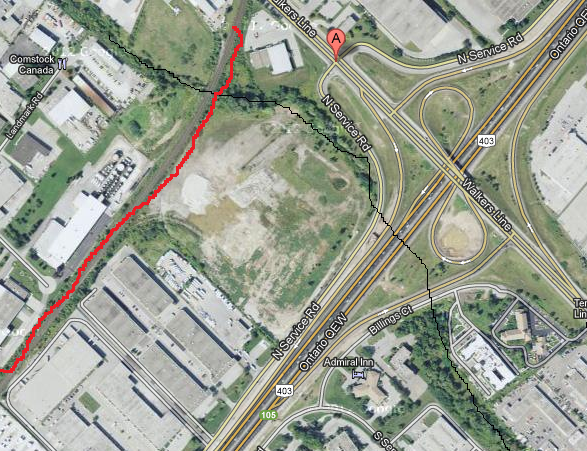 That red line is the railway tracks – the thin black line is the creek on the east of the property. Getting 1.5 million cars through the Walkers Line intersection is not going to be an easy transportation exercise. Mayor Goldring misleads when he doesn’t tell the full story. In the world of planning and design all is possible – but it is not easy and the Mayor misleads his audience when he says “two other processes” – when he should have said two bloody big hurdles that we don’t know quite how we are going to get over and if you’ve got any good ideas – give me a call.
The QEW is a provincial road so we are going to have to work closely with them
The Mayor then used some rather good public relations spin and turned this problem into what you are going to hear called THE PROSPERITY CORRIDOR which will stretch from Guelph Line to Appleby line on both sides of the QEW. That prosperity is going to amount to two million square feet of new office and industrial space and 6,000 high value jobs.
The Mayor talked about the role the IKEA project played in “helping us shape the new direction for the Burlington Economic Development Corporation” (BEDC). That was an impressive piece of public relations spin. The Mayor’s former Chief of Staff, Frank McKeown felt the best thing that could be done with the BEDC, which wasn’t performing all that well, was to “blow it up”.
There are some 20 people on the BEDC board. It looks like a federal cabinet that has to meet the demographics of a large diverse country. A board that size has people there to ensure that their interests are protected. The objective should be to get the smartest people you can find to do the job forget who they represent. Paul Subject, a member of the board, didn’t expect to have to jump into the fray when he put in more time than he expected working through the way the BEDC would re-shape itself to meet the very real problems it was facing.
The city hasn’t approved the budget that is going to be needed to re-shape the BEDC; the Mayor didn’t mention that one either.
The proof is always in the pudding – and this one is still in the pot. The people who do the thinking in this city are going to find themselves re-thinking and perhaps re-shaping the council that leads them. See that as a heads up.


BURLINGTON, ON
January 24th, 2013
Dear Sir:
In the beginning there was a plan for a partnership between the city, senior levels of government and interested citizens of the city to build a Performing Arts Centre and then have it operated by a separate and independent board. As years past the estimated cost of construction grew without any government commitment to maintain or increase their share of the costs. Private groups came forward saying they would hard to make up the difference but there were no tangible dollars put down.
As estimated costs grew without a plan to pay for them I wrote council and the Post about the financial peril of the project. Unfortunately dreams prevailed over facts and the project went ahead.
 Ward 4 resident Jim Barnett says: “The mayor now says this slow start-up is normal. If it is normal, then it would have been anticipated. It is abnormal, thus the city is being asked to bail the project out. It was not that long ago the city was touting the independent board that would make handouts unnecessary.” The business plan as presented never did have a realistic ramp up in revenues in the early years, but with out this incorrect forecast, the project might not have gone ahead. Therefore it was ignored and the praying started. Well the praying did not work and there is a substantial shortfall. Not only in 2013 but likely for some years to come.
The mayor now says this slow start-up is normal. If it is normal, then it would have been anticipated. It is abnormal, thus the city is being asked to bail the project out. It was not that long ago the city was touting the independent board that would make handouts unnecessary.
Having to hire two more people at this time again points out the flaws in the plan to date.
Let us all remember that only a small cross-section of the citizens use the facility.
When all costs are in, the pier will exceed $20 million and you will not be getting anything back in insurance.
I fear that Performing Arts Centre will also become a drain on the city’s resources, making plans for the hospital more difficult, and increasing taxes for the people who do not use the facility.
Unfortunately I do not have a solution. I hope someone can come forward with a way to save the project and prevent another embarrassment for the city.
In the meantime, I hope the city going forward gets out of the business of building structures that they do not know how construct, finance, budget or manage.
Jim Barnett
Letters to the Editor are welcome. Please include a telephone number at which you can be reached. We qualify each submission. Include illustrations if you wish.

 By Margaret Lindsay Holton By Margaret Lindsay Holton
BURLINGTON, ON. January 14, 2013 I have been watching and listening with a great deal of interest over the past few days to the ‘Idle No More’ movement that has erupted across Canada. There are many issues on the table, not the least of which is the desire by the people of the First Nations to be treated as Nations by the current Harper regime governing in Canada. In the midst of this activity – that had me thinking a lot about Canadian colonial history – I received a note from OurBurlington’s publisher, to remark on the recently announced winner of the Public Art Commission for the Burlington Performing Arts Centre. His note to me read, “Can you comment on this in your next column? Be fair, but be very direct as well”.
I read the attached press release. Peter Powning, from far-off New Brunswick, has won, with his design, Spiral Stela. Included in the City of Burlington’s press release was an open invitation to the public to add ‘objects of significance’ or “cultural mulch” to his sculpture. “The artist will make a mould of the object, which will then be cast in bronze and added to a large band that encircles the sculpture.” Three times and two locations were provided so the public can participate: Jan 31, 10-3 pm at the Central Library and 7 pm-9 pm at the Burlington Performing Arts Centre, and also February 3rd at the Burlington Arts Centre from 2-4 pm. The final session will include an artist lecture and ‘creating session’.
 The proposed sculpture: Spiral Stela, by Peter Powning, from far-off New Brunswick. Well, here’s my opinion about all that. (Remember I’ve just been listening, watching and learning from the Idle No More movement … )
I agree to participate in the ‘cultural mulch’ ceremony that will ‘imprint’ objects of significance – presumably from Burlingtonians – onto this foreign object, for posterity. To that end, I will bring a swatch of plastic grass to commemorate the winter of 2009 when our City Elders sold out a piece of our irrefutably unique natural heritage, now known as City View Park in North Burlington, at Kerns Road and Dundas Street, to the Pan Am Games organization of Toronto.
The DESIGN for this largest parkland area in Burlington, supposedly protected under the Greenbelt Act and the Niagara Escarpment Commission, was transformed in the 11th hour by City staff and members of our previous – and current – City Council into a ‘sports tourism destination’ without any public consultation with immediate residents, or an Environmental Impact Assessment that analyzes how tons of plastic grass will impact this environmentally sensitive era. Thems the facts.
Initially conceived as a “recreational” diverse ‘natural’ parkland area for ALL to enjoy, this park has – and will – become a ‘member’s only’ fenced-in facility geared towards ‘tournament grade’ soccer. In short, WE, the tax-paying public, have lost OUR park, an important local natural heritage ROOT.
There MAY be an opportunity to regain this park after the Pan Am Games in 2015 when the toxic artificial turf carpets must, by law, go to a hazardous waste facility. (Plastic grass expires every 5-8 years. Two of the plastic carpets were laid in 2011. The ‘tournament’ field and flood-lit stadium will be installed in the fall of this year, or spring of 2014. So, somewhere around 2020, that toxic gunk will have to come out.)
 City View Park: Before plastic grass installation, this once-living landscape had to be scraped ‘clean’ and made pan-cake flat. Photo by Margaret Lindsay Holton. At that time, it will be up to the NEW City Council to determine if taxpayers funds will be utilized to re-carpet this smothered ground again with million dollar plastic turf, OR, alternatively, whether they will finally have the good sense to rejuvenate this slowly dying eco-system with real growing grass, and, by so doing, provide an essential ‘natural habitat’ for animals (including humans), birds, insects and earth-churning worms. If so, they will also have the opportunity to remove the restrictive fences. This action alone would once again allow all forms of life to freely traverse across this unique open landscape. Living creatures could once again forage within this distinct portion of our section of the designated UNESCO Biosphere, known as the Niagara Escarpment.
Will they do it? Who knows.
Perhaps, years ahead, when Burlington has become the utopian Jersey Shore of the Golden Horseshoe, with electric light-rail transit zipping through the landscape powered by solar and geo-thermal energy, and the old-time ‘locals’ are long dead and buried, newly arrived residents will wonder aloud about the lunacy of previous City Elders who covered their ever-diminishing living-giving-breathing Earth with Life-defying plastic, especially in a ‘protected’ PARK. They may wonder why these turkeys so deliberately eliminated a vital and tangible connection to our communal Burlington natural heritage, the Niagara Escarpment. That is, of course, if they know how to wonder at all.
It is a very real possibility that this on-going eco-travesty will just be forgotten. Taxpayers will duly pay the exorbitant replacement costs for a PRIVATE ‘members-only’ tournament soccer facility in a PUBLIC park, and the wildlife that does still roam and roost throughout North Burlington’s escarpment terrain will just quietly die off … A dull robotic monoculture of humans will survive on imported genetically modified foods. Tax-enslaved workers will buy FRESH water from off-shore nations who did FIPA-like deals under Harper’s regime. Children will learn programming before they can speak. And ‘play’ itself will become a forgotten IDEA buried under intense competition to host tournament-sport ‘tourism’.
Still, I have hope.
On the first dawn of this New Year I looked out the frosted windows at the farm in North Burlington and watched as twelve robust wild turkeys emerged from a conifer stand and slowly began to forage across the snow-covered yard under the bright winter sun. It was a stately, near sacred, sight to see.
Where had they come from? Where were they going? And why did there seem to be so many?
I had to do some sleuthing.
 Author tracks multiple wild turkey tracks. Photo by Margaret Lindsay Holton. Wild turkey was originally native to Ontario, but they disappeared at the turn of the last century due to rapid colonization, habitat destruction and unregulated hunting by settlers. In brief, we killed off the species.
 But, in the mid 1980’s wild turkeys were re-introduced at 38 different release locations in southern Ontario through a program to “restore our natural heritage, provide fowl for hunting and viewing recreation, and derive economic benefits.” (Ministry of Natural Resources). Begun in 1984, the Ontario Federation of Anglers and Hunters, in partnership with the National Wild Turkey Federation and the Ontario Ministry of Natural Resources, launched a reintroduction program that began with just 274 birds. But, in the mid 1980’s wild turkeys were re-introduced at 38 different release locations in southern Ontario through a program to “restore our natural heritage, provide fowl for hunting and viewing recreation, and derive economic benefits.” (Ministry of Natural Resources). Begun in 1984, the Ontario Federation of Anglers and Hunters, in partnership with the National Wild Turkey Federation and the Ontario Ministry of Natural Resources, launched a reintroduction program that began with just 274 birds.
Stock from the wild turkey populations of New York, Michigan, Nebraska and Tennessee were often ‘swapped’ for wildlife species from this province: moose for Michigan, river otters to Missouri and Nebraska, and gray partridge to New York state. Today, wild turkeys have adapted to our agricultural farmlands totaling somewhere between 60 to 80,000 wild birds.
Turkey hunting season officially began in 1987, and was initially restricted to a spring hunt. But in 2009, a fall hunt was introduced. Only bearded toms, (mature male turkeys), are allowed to be harvested. ‘Turkey season’, (April 25th, after the peak breeding season, until the end of May), has now been established in most rural areas in Ontario. This hunt is also open to hunters from outside the province.
Wild turkeys are known as promiscuous breeders. Most individual adult males will mate with multiple females. Hens lay a clutch of 10-12 eggs during a two-week period, usually laying one egg per day. Young males are commonly called ‘jakes’ and young females are ‘jennies’. They consume a wide variety of wild foods, including hard mast (acorns, seeds), soft mast (wild grapes, raspberries), green vegetation, and insects. In areas where natural habitats have been replaced by agriculture, turkeys may also feed on domestic grains, like corn, buckwheat, alfalfa and/or soybean. Young turkeys (poults) feed almost exclusively on insects for the first several weeks of life. Insects provide poults with the high-protein diet that they require for rapid growth. A 2-3 week old turkey can eat several thousand insects a day. As you can see, wild turkeys, like all wild critters, need a diversified living habitat in order to survive.
 Wild birds die after ingesting bright bits of PLASTIC, mistaken as FOOD. Other predators, besides humans, such as coyote and raccoon, are capable of snatching young turkeys, but most are no match for a mature fighting tom. Wild turkeys can run up to 40 km per hour and fly as fast at 90 km per hour. They can cover over 20 miles per day in search of food. A male tom can be up to 4 feet tall (!), and weigh over 30 pounds. Females are, on average, about half that size. Wild turkeys have excellent vision during the day, but can hardly see at night. They roost high off the ground, usually in trees, at dusk. Conifers often provide thermal protection for roosting turkeys so they can conserve energy under extreme cold and windy conditions.
 Wild turkey roosting in trees at night fall. The sale of turkey licenses per annum contributes over $250,000 to wildlife management programs in Ontario. The annual spring and fall hunts generate economic activity for the province worth $2.3 million. (So says the Ministry of Natural Resources).
As of 1999, the use of live decoys, electronic calls and baiting for the purpose of hunting wild turkeys was prohibited. Finally, only a landowner, with a valid firearm license, may shoot wild turkeys that are damaging or about to damage their property.
 Obese domestically raised 20 pound turkey carcass in a kitchen sink. Can wild turkeys hurt you? Any wild animal when cornered or harassed may attack. So, if concerned, call in an expert. Note, only a registered turkey hunter or landowner (with a valid firearm license) can shoot wild turkeys.
All in all, the reintroduction of wild turkey in this province has been a success. Wild turkeys are thriving once again in Halton County in rural North Burlington. Due to human initiative and determination, this formerly extinct species has re-established a solid toe-hold in this, our home and native land. Their reintroduction has, as promised, added to the natural heritage of Ontario. The growing populations are providing viewing as well as hunting recreational activity and, as such, they are adding revenue to our economy.
If we, as humans, can do that over the short course of twenty odd years, surely we can a) improve our dialogue with Canada’s First Nations, and b) bring back City View Park to a ‘natural state’ for future generations.
I wonder what plastic grass looks like when it’s cast in bronze …
Margaret Lindsay Holton is both an environmentalist and a community activist. She is an artist of some renown and the designer of a typeface. She is also a photographer and the holder of opinions, which are her own, that she will share with you in an instant. She appears as an Our Burlington columnist every two weeks. All photographs are by MLH unless otherwise indicated.

 By Pepper Parr By Pepper Parr
BURLINGTON, ON. January 8, 2012 This is one of those jaw dropping stories. Bookmark it and take the time to go through the whole thing. Amazing, absolutely amazing.
A group called the National Oceanic and Atmospheric Administration has created a room sized, global display system that uses computers and video projectors to display planetary data onto a six-foot diameter sphere, analogous to a giant animated globe.
 This isn’t a photograph of the earth but instead it is a globe shaped computer screen on which the earth has been projected. All kinds of data can be projected on this kind of computer screen that comes in models up to 3 metres wide. The data can be a live feed from a satellite. Consider the possibilities? They call it Science On a Sphere® and promote it as an educational tool to help illustrate Earth System science to people of all ages.
They project data on this room sized globe and then move the globe around so that you can see this world of ours from different angles. With the globe in place they can display all kinds of data on the thing. If your child’s science teacher doesn’t know about this – make sure you tell them.
 This is an image from that globe shaped computer screen of live cloud data fed from satellites that show the formation and movement of clouds. How weather moves around the globe is displayed and you can see the changes taking place right before your eyes.
 Remember now – you are seeing an image on a computer screen that is very large and shaped like a globe. The image you see here is of the warm water currents, shown in light green, as they move down the west side of Africa across the Atlantic. What does that do to our weather patterns? Ever wondered what the “gulf stream” really is and how it affects our weather. You can see where it originates and how the flow of warm air moves around the globe.
You can see whatever data is put up on this huge globe. The educational opportunities are incredible. Information about the impact of air pollution, water pollution – the impact of the changing seasons on our world – there to be seen right before your eyes.
In one segment they show how the continents on this earth were formed. This is absolutely amazing stuff. Animated images of atmospheric storms, climate change, and ocean temperature can be shown on the sphere, which is used to explain what are sometimes complex environmental processes, in a way that is simultaneously intuitive and captivating.
These things are not cheap. They cost around $43,000 for a 24-inch diameter HyperGlobe from iGlobe of Franklin, N.H.; $40,000 for a 32-inch OmniGlobe from ARC Science of Loveland, Colo., or $21,000 for a 24-inch Magic Planet from the market leader, Global Imagination of Santa Clara, Calif.
The Halton Board of Education isn’t going to pony up that kind of money (but if they let one of the bureaucrats go – maybe?) The prices, though, are falling. Mike Foody, the C.E.O. of Global Imagination, says that he hopes to have education-discounted prices down to $2,500 within a year or two. If he succeeds, that would be within the price point of other high-tech classroom equipment, like interactive whiteboards.
A digital globe can illuminate the human planet and display whatever we want in the way of data: wars, colonization, and the formation of diaspora, modern trade flows or air traffic.
While this stuff is not brand new, been around since 2010, scientists and educators are now getting a sense of just what they can display in terms of information.
It won’t be long before this kind of data display will be part of every news source. Instead of having the oil lobbyists tell us that the tar sands are not harming the environment – we will be able to see the actual changes – live – of the impact the tar sands are having on the environment. We will be able to see crop failures as well as bountiful crops.
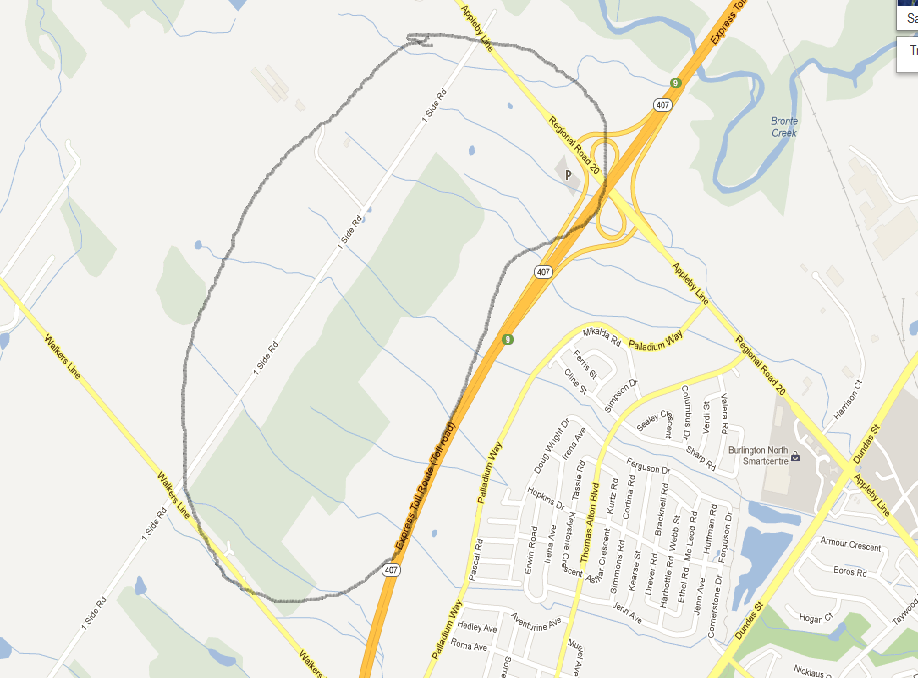 This is the area any pipeline break would impact. The actual pipeline runs through the northern part of the city north of Side Road # 1 and south of Side Road # 2 To bring this down to a purely local level, consider the very real concern about what Enbridge, a national energy transportation company wants to do with the pipeline they own that runs through north Burlington. Enbridge is a powerful North American oil and natural gas transportation company. The gas heating your house is delivered to your door by Enbridge.
They have pipeline projects being developed throughout North America. Some analysts think that Enbridge has figured out they will not be able to get a pipeline though western Canada to get Alberta oil to the far east – so they want to use the pipelines they have to move that oil to eastern Canada and on into the United States where there is a strong market. These guys are big.
The pipeline they want to do that with is a 37-year-old line that runs through Burlington between #1 Side Road and # 2 Side Road.
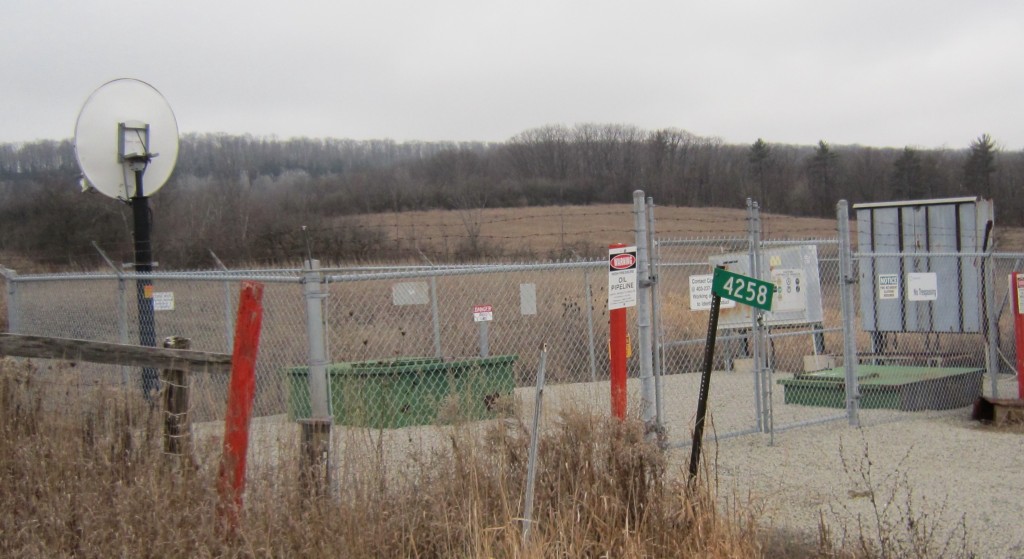 Part of the Enbridge #9 pipeline where it crosses Walkers Line. The company wants to reverse the flow of oil through this line so that it goes from west to east. Reversing the flow in a pipeline is no small matter. This line is more than 37 years old. What kind of shape do you think it’s in? Enbridge is seeking permission to be able to reverse the flow of oil through their pipeline – not as simple as it seems. And they want to ship bitumen from the Alberta tar sands through to Montreal and points eastward. Problem for Burlington is, there are creeks galore that run south of that pipeline – right smack into our communities and on into Lake Ontario.
Were that pipeline to burst – and where have we heard of pipeline bursts before – parts of this city would be severely damaged. City hall worries about who is going to pay for any clean up that might have to be done.
As you can see from the still photo’s we have posted there is certainly a pipe line there but we can’t show you the connection to the different creeks and then follow those creeks in real-time down to the lake.
While on the matter of that Enbridge application – it is going to get messy. Hamilton has been dealing with Enbridge on a different application and has found the company very difficult to deal with.
Mayor Goldring, a staunch environmentalist, wants to do something but isn’t quite sure what the first step should be. The federal government has cut back severely on the number and circumstances under which environmental assessments take place – they have basically taken themselves out of that business. Don’t expect to read anything about this in the Newsletter our MP, “Marvelous” Mike Wallace sends to you at your expense.
The province could decide that it wanted an environmental assessment done and the Region could get creative and look for ways to cause an environmental assessment to take place. Problem is the Region isn’t all that a creative place these days.
Ideally, our MP should have met with our Mayor by now to work together to find a way to, first get the facts and inform the citizens, and then figure out what the city can do to protect its citizens.
BurlingtonGreen is advocating heavily for a public meeting. The key player in all this appears to be the National Energy Board (NEB) that decides if Enbridge gets permission to reverse the flow of oil in their pipeline and also decides if they are going to be given permission to move bitumen from the tar sands though the pipeline.
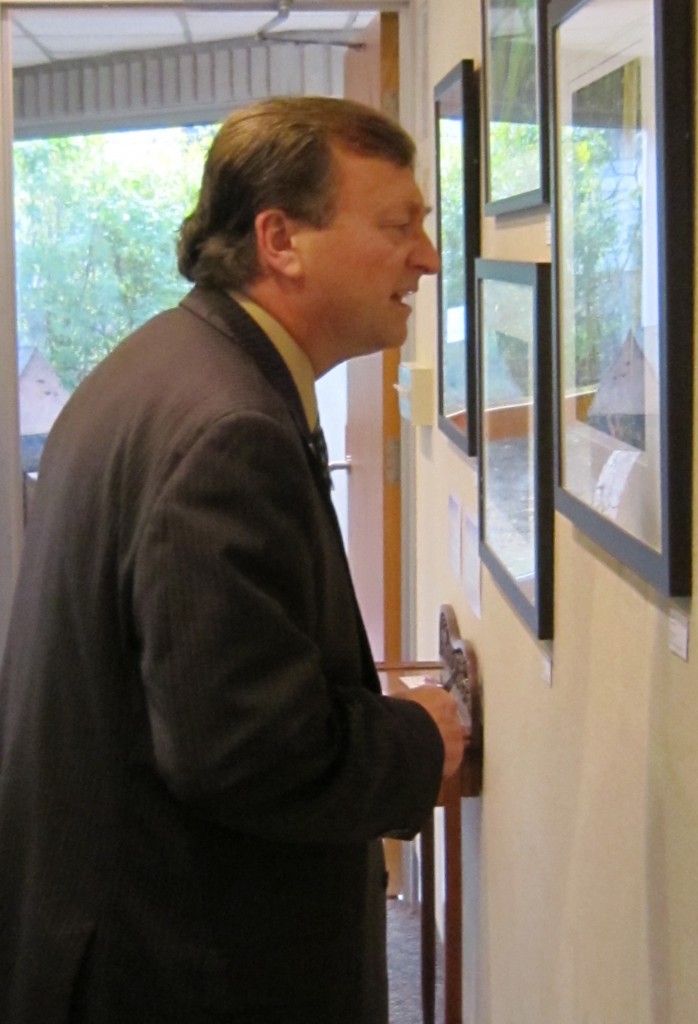 Burlington’s Member of Parliament Mike Wallace takes a close look at a piece of art while taking part in a photo-op that had him announcing the opening of a kiln at the Art Centre. There are some in the city who think the MP might involve himself in taking a closer look at an oil pipeline application that could negatively impact the city. Burlington could invite the National Energy Board to town and talk to the public. The NEB is a federal agency; our MP “Marvelous” Mike could make some of those phone calls on behalf of the city to set up a meeting. He may have already done that – ya think?
What Burlington wants to know is: what shape is that 37-year-old pipeline in? Dig up a section and let’s have a look at the condition of the pipe. And then do a study of what the impacts would be if there were a break in the line should they be given permission to move bitumen through that line.
Any study done would be a report printed on paper with maybe a video as part of the document. But if there were a way to put current data on one of those globes and put that on-line where anyone at any time could log in and see for themselves what is happening – that would be great new age journalism; great public education and as educational as all get out.
Researching this would make an ideal high school science project. The full story of what the Science on a Sphere was published in the New York Times.

 REVISED, January 1, 2013 REVISED, January 1, 2013
By Pepper Parr
BURLINGTON, ON. December 31, 2012 When the Waterfront Access and Protection Advisory Committee (WAPAC) was set up it wasn’t intended as an experiment. There was a lot of hope in the air – the community was at last going to have something they could be a significant part of – the waterfront would be saved for the public.
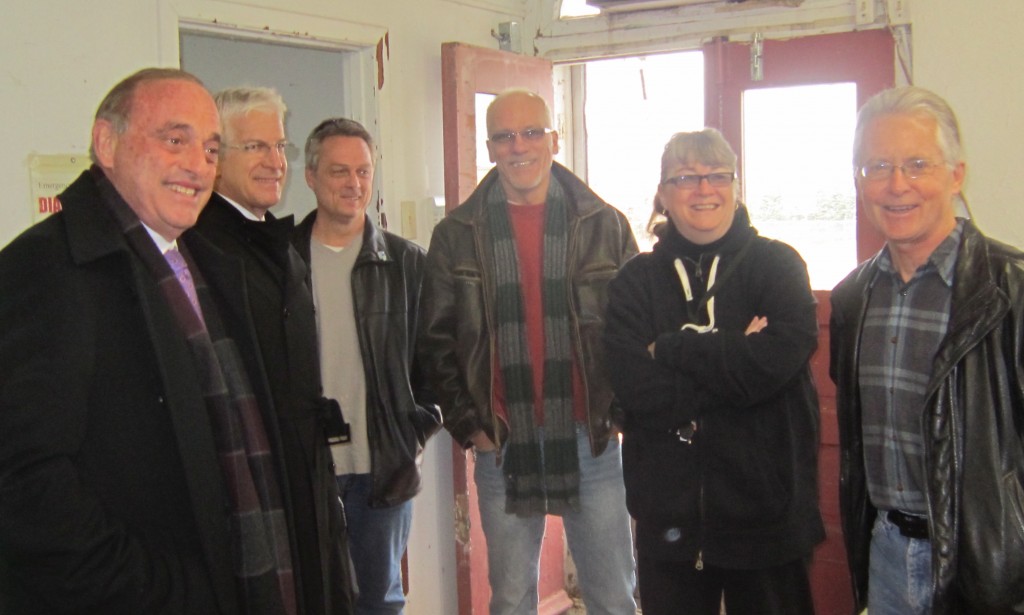 They could be called the Pump House crew. The committee that then Ward 2 candidate Marianne Meed Ward used to sail into office: Save our Waterfront (SOW) said proudly : Members and supporters of Burlington Save Our Waterfront achieved a major victory for community engagement Monday, as city council unanimously passed the Burlington Waterfront Access and Protection Advisory Committee.” SOW then began doing what they could to ensure they had at least one of “their” people on that committee. In that they succeeded when Sarah Banks was appointed.
There were two representatives from each ward in the city. During the first few months of their existence Councillor Rick Craven chaired the committee which then chose Nick Leblovic to be chair and the re-elected him for their second year of existence.
Our Burlington began covering the committee meetings early in 2011 and was the only media to do so. When the committee decided to invite former Toronto Mayor David Crombie to speak to them about how you get the community behind the development of a waterfront and not allow the developers to just take over it looked like they were going in a positive direction.
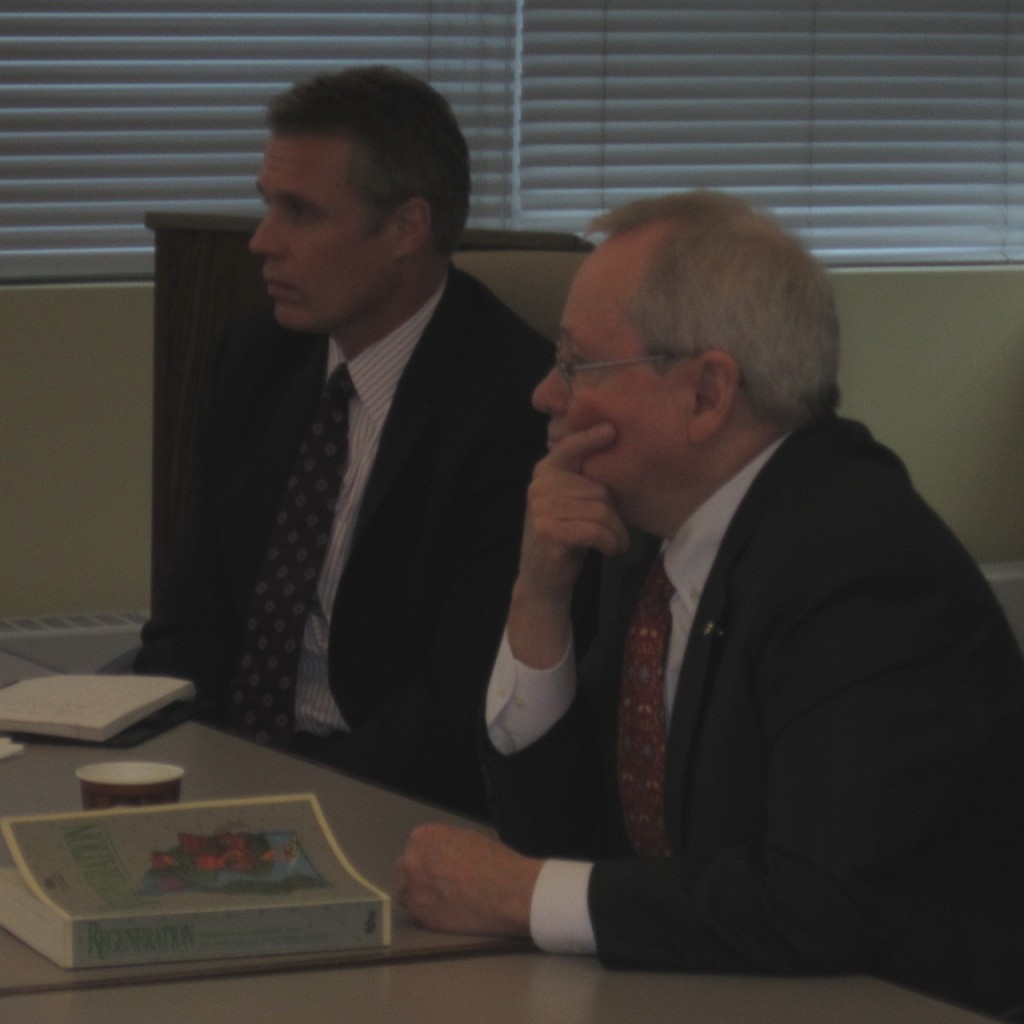 It took sometime to get former Toronto Mayor David Crombie in front of WAPAC but when he did appear he didn’t disappoint. Mayor Goldring joined Crombie but didn’t manage to pick up much in the way of enthusiasm for the idea of a design competition. It took a couple of months to get Crombie to a meeting, which Chair Leblovic saw as a big feather in his cap, and when he arrived he proved to be worth every penny of the $500 honorarium he was given. Rick Goldring was now Mayor and he sat beside Crombie but really didn’t buy into much of what Crombie was suggesting. While Goldring was still getting the feel of his job it was clear that he and Crombie had significantly different operating styles.
Crombie chastised the city for not following through on the once excellent reputation the city had for its participation in the Waterfront Trail; that was a lead the committee never picked up on.
It was also evident at that meeting that Leblovic was not going to be anywhere near as outgoing or as bold as Crombie. Nevertheless, the committee was quite pumped with what they heard from Crombie and took on his idea of holding a design competitionn. It was a great idea and was put in the hands of Sarah Banks who wasn’t up to the task – which should not be seen as a reflection on either Banks’s enthusiasm or competency. She, along with everyone else on the committee knew nothing about how to host a design competition. When the idea got to city council – it didn’t get much help there.
Unfortunately the Planning Department didn’t step forward and offer any help. Banks floundered and wasn’t given much help from her chair other than to be told she could not speak to media. That was a ‘privilege’ apparently reserved for the chair and Our Burlington did indeed have numerous Saturday morning talks with Leblovic.
The idea for a Design Competition was to attract architects internationally who would look at the site and return with ideas and proposals – there was not much more to it than that – which in itself was enough. The objective was to get the public thinking about what it wanted and not wait until developer had assembled the land and then did what they wanted to do.
Banks didn’t have the help she needed and appeared not to know where to look for the help. Sarah Banks was the kind of person who would walk into a room and radiate enthusiasm which made life in Burlington less than satisfactory for her and she later left the city and moved to Ottawa; Burlington wasn’t her kind of town.
Gary Scobie took on the task of getting a Design Competition going and came close to pleading with a city council committee to fund the $45,000 WAPAC felt was needed. City council wasn’t adverse to the idea but they needed more in the way of a business plan from Scobie – and that wasn’t forthcoming. They ran out of steam and in hindsight that can be seen as a turning point for the committee.
The WAPAC committee was made up of representatives from every ward in the city. The problem was the committee met on Friday mornings which made participating very difficult for younger people with full time jobs. A Saturday morning meeting schedule would have drawn an entirely different group of people. They didn’t promote their activities, they never held a meeting at which the general public could attend at a convenient time nor did they come up with a way to involve the public. They saw themselves as “the” public and they would speak for the city.
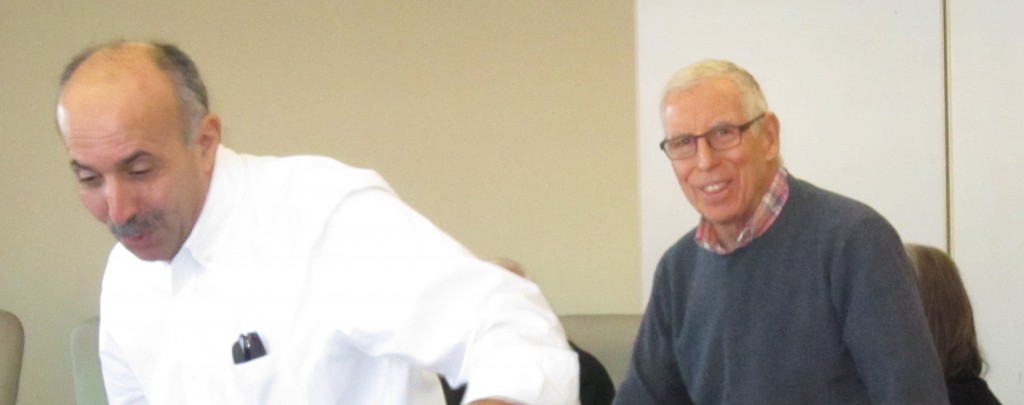 Mohamed Alizadeh on the left with Bob Wingfield at the final meeting of WAPAC Most of the committee members were well over 50 and closer to 65 in age. The energy levels weren’t what they could have been.
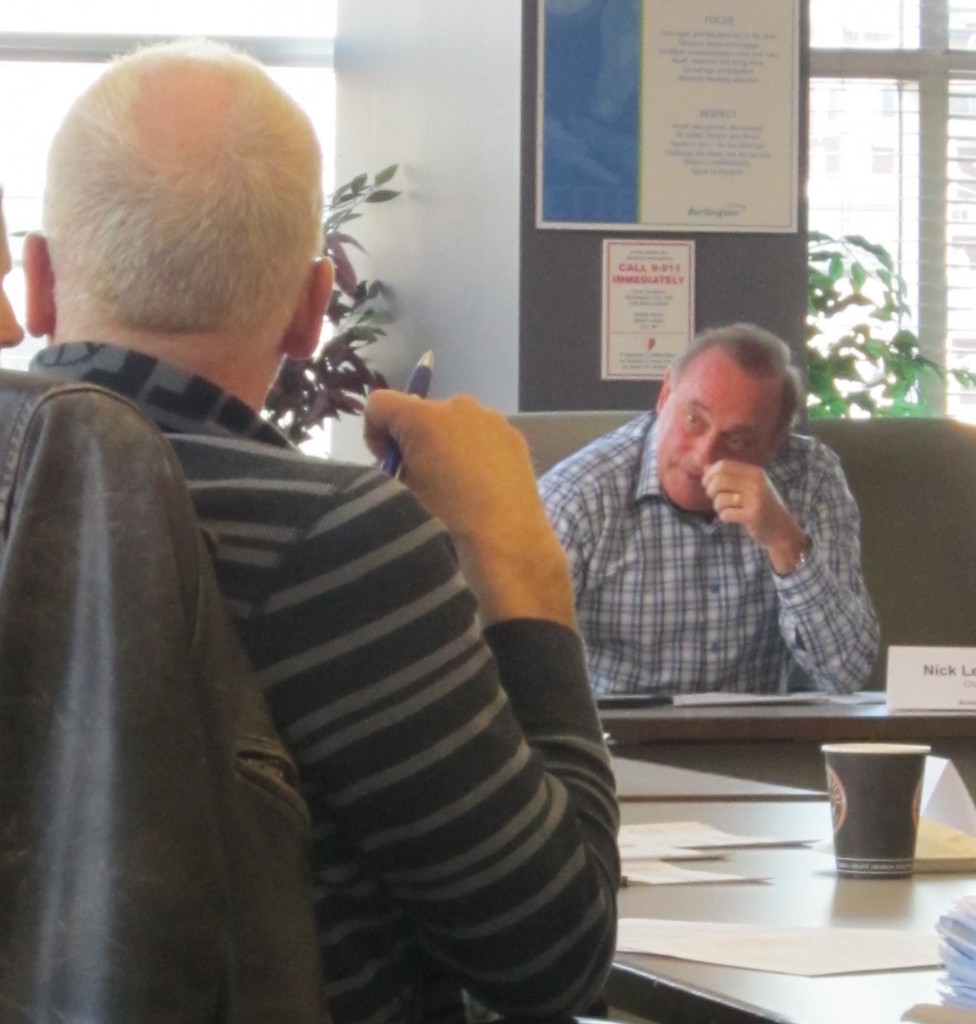 As chair Leblovic would give every committee member more than ample opportunity to speak – sometimes for too long. He didn’t limit speakers – his approach was to listen to everyone. Leblovic chose to use the first year learning what the issues were and what the city was up against in terms of developing the waterfront. The committee brought in speaker after speaker – all of whom knew their subjects very well. City Planner Bruce Krushelnicki spoke to the group and appeared again at their next meeting to clarify what could be done with properties that were on the south side of Old Lakeshore Road. They learned more about a piece of property that was once owned by Tim Horton’s Corporation than they really needed to know, including that it was once a gas station.
A committee put in place to advise had turned into a Friday morning class where you could learn a lot about what other people were doing with their waterfronts but WAPAC hadn’t gotten to the point where it was ready and perhaps not able to give any advice.
Senior city staff began to chaff at meetings that didn’t achieve anything and didn’t seem to have a purpose. City council began to despair and during the end of Q1 in 2012 came to the conclusion that the committee wasn’t going anywhere and decided to bring it to an end. There was much gnashing of teeth on the part of the WAPAC chair and several of the committee members who felt they had indeed done something useful – and they did do some very useful work for the city.
 The development that is going to make the biggest difference to the waterfront in the next five to seven years was one that had been cast in stone before WAPAC was created. Could they have done anything about the scale? But the “grand vision” for the waterfront that many expected wasn’t forthcoming. There is no vision for the lands to the east of the Spencer Smith Park other than saying OK to the committee of adjustment changes the developers of the Bridgewater project that will see a 22 story condo; a seven story condo and an 8 story hotel begin construction hopefully sometime during the second half of 2013.
WAPAC didn’t have much to say either in terms of advice about the Beachway Park other than to say the residents should be allowed to remain. For an issue that is central to the completion of what the waterfront looks like in the next ten years WAPAC was disturbingly quiet.
The properties to the east of the Bridgewater project, in an area referred to as “the football” because of its shape, are owned by some 12 different people. The WAPAC committee found that there wasn’t much in the way of opportunity for these people to work together and allow a land assembly, and without a land assembly there wasn’t going to be much in the way of development.
One of the things about land is that sooner or later a developer sees an opportunity and takes bold steps as well as financial risk and buys the land, then hires the specialists needed to convince city council to give them what they want in the way of Official Plan and zoning changes.
The Planners who work for developers are much more motivated than those at city hall and they bring a level of creativity that just doesn’t come from municipal planners. It takes a level of municipal leadership to get in front of situations like this and have the city heavily involved with the development process. This isn’t the kind of planner Burlington has in Bruce Krushelnicki. The city does have one of the best thinkers in the planning field and he knows the process as well as anyone else out there – but he doesn’t see himself as the person to advocate for a particular direction. Maintain what we have and ensure that the rules are followed is the planning department mantra.
There were far too many missed opportunities. All that said – the WAPAC people did some significant work and took recommendations to city council – where absolutely nothing was done.
In their final report to the city, (which is set out below in bold with our comments beneath each) WAPAC said:
Development of Old Lakeshore Road
Council has our recommendations relating to the future development of the Old Lakeshore Road precinct. These relate to design criteria including public space and access to waterfront, incorporation of Waterfront Trail, design conformity of buildings and mixed use commercial/residential. The recommendations stressed the importance of the Old Lakeshore Road (OLR) being a welcoming and eye-catching eastern entrance to the Downtown Waterfront.
The Committee recommended ongoing dialogue with the OLR stakeholders concerning the development criteria and the ongoing participation of staff and Council representatives in this process.
The Committee initiated a staff direction (approved by Council) to make the OLR a specific focus area in the current Official Plan (OP) Review. The New Committee will work with OP Review team on this initiative.
With the Official Plan Review now leaderless, the Old Lakeshore Road precinct may not get the attention it deserves.
Beachway Park Master Plan
The Committee made recommendations on suggested uses for the Pump House (pub and/or coffee-house), animation of the Beach and walking path and incorporation of the Freeman Station on the Beach as well as recommendations to remove hydro towers/lines from the beach. Hydro is studying this aspect on Council’s request.
The Committee has given preliminary consideration to the issue of the existing residential community in the Beachway Park precinct. Based on the information provided to the Committee to date, there is a general consensus supporting the continuation of this community. However no final recommendation can be made on this matter until the issue of the final reports of the Region and Conservation Halton addressing applicable health, environmental, safety and other relevant considerations. The New Committee will review these reports when issued and provide a final recommendation to Council.
Converting the Pump House on the Beachway into a destination as a coffee shop/wine bar with an outdoor patio was close to the best thing the committee did. When it was being discussed by WAPAC there was considerable consternation behind the scenes with several members of the committee becoming more than agitated at what they saw as foot dragging by the chair.
Waterfront Encroachment of Public Land by Private Homeowners
The Committee has made recommendations to Council on Windows On The Water improvements (proper signage, public access, lighting, benches, vegetation trimming and trash receptacles). We have requested enforcement of current encroachments bylaws to maintain public access to these Windows. Council has directed staff to design a comprehensive encroachment policy and bylaw this. The New Committee will review the draft policies and by-laws when available.
The Committee has also suggested that a similar encroachment by-law be enacted by the Region in respect of waterfront property owned by the Region.
WAPAC created a subcommittee that traveled from one end of the city to the other along the lake’s edge and identified a number of properties that were public but not very accessible. It was a solid report with excellent field work done. It sits on a shelf somewhere at city hall where key people over there responsible for acting on this hope it never leaves the shelf it is on. When Bob Peachy spoke to the WAPAC people he commented that “this isn’t one of my favourite files” and it is a tough file. There are some very influential property owners along the edge of the lake who don’t want to share those public spaces. There are pieces of property the city owns and the public should have access to but property owners make it awkward, if not outright impossible for the public to sit at the edge of the lake and enjoy a picnic lunch.
It is going to take someone with courage and innovative ideas to give the public access to public property and right now that doesn’t exist.
Rock Wave break at La Salle Park Marina
The Committee recommends that the appropriate modifications be made to the final design in order to accommodate the Trumpeter Swan population that resides in the vicinity of La Salle Park.
A nice recommendation that doesn’t have the full support of several WAPAC members. When Beverly Kingdon made her second presentation to WAPAC she asked again for support to ensure that the planned wave break would not harm the habitat the swans had created for themselves. Kingdon was quietly listened to and then sent on her way. Once she had left the room committee member Les Armstrong said quite forcefully that the only reason the swans came to the LaSalle Park part of the city was because people fed them. “Stop feeding them and they will find someplace else to get food”, said Armstrong. The Halton Conservation Authority is concerned over waterfront pollution to which the swans and geese are major contributors – no one bothered to bring that concern up with Kingdon. The biggest factor in making the water unsafe for the public is the waste from the geese that people continue to feed. There are signs along the edge of the LaSalle Marina property asking people not to feed the geese; the swans appear to get different treatment – why? Animal waste is animal waste.
While Armstrong’s remarks were valid – they should have been made while Kingdon was in the room – the chair should not have let that happen.
Public Boat Ramp(s) on Lake Ontario
Committee has expressed a desire to work with the City, the Region and the HRCA in determining future sites for recommendations. The New Committee will work on this project.
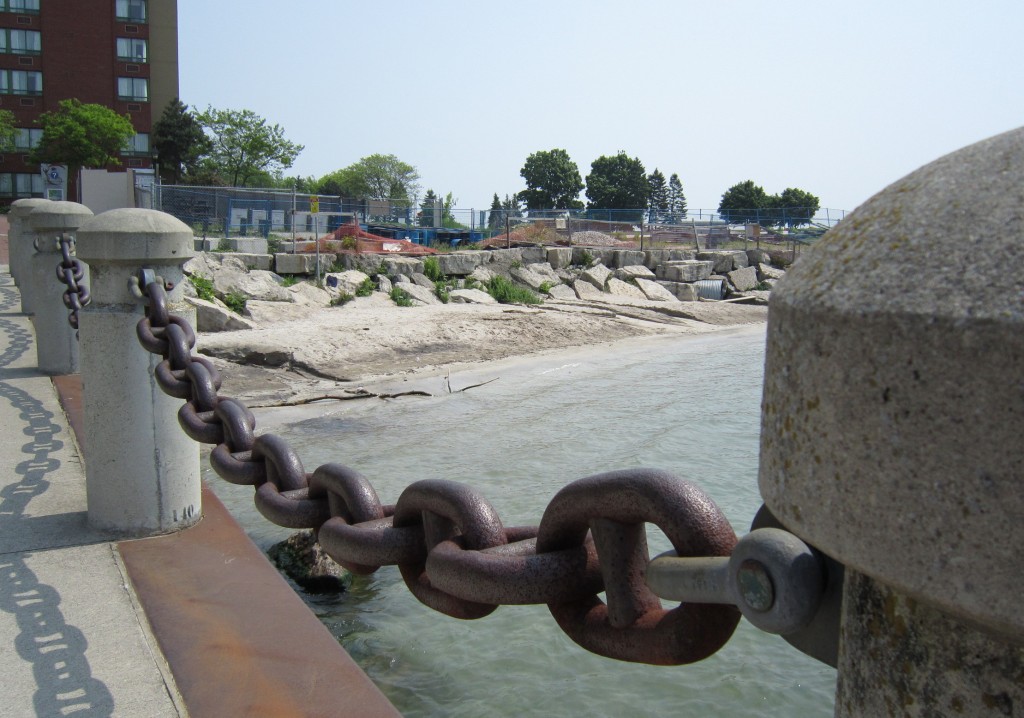 A natural beach created when land jutting out into the lake was formed – some think the “mini-beach should have a boat dock dropped into place. Burlington has wanted additional boat ramps for some time – the political will to make this happen just isn’t in place. Many think there will be boat ramps as part of the development of the Brant Street Pier. There was discussion for a small set of docks that would be taken out in the winter as part of the pier and located in the mini-beach that got created when the pier pilings were put in place. That got shot down quickly when the city’s Director of Engineering mentioned the $100,000 + cost.
Acquisition of Waterfront Land
The Committee has recommended that Council develop a policy concerning future acquisition of waterfront lands for public use as and when they become available including how and when to use park dedication and section 37 of the Municipal Act. The New Committee will work with Council on this issue.
City council didn’t need a reminder from an Advisory committee on this one; what the city needs is some bold thinking on the part of this council to create a land acquisition fund and perhaps agree that a percentage of every surplus be put into the fund. When the hospital tax levy ends this Council might move to cut that back by half with the remaining half going into a Waterfront Land Acquisition Trust Fund. They could do that tomorrow if they wanted to.
Waterfront Access and Protection
As per the recommendation of the Committee the Waterfront is to be an area of specific focus within the OP Review. The Committee has provided City staff with various examples of plans and studies of other Ontario waterfront communities in relation to the development and public use of their waterfronts which will be part of the best practices review being undertaken as part of the OP review of the Waterfront. The New Committee will work with OP Review team to add citizen views and expertise.
This one will go wherever Council and the people who head up the Official Plan Review want it to go. In the past, WAPAC was able to ask city hall staff to make presentations and take part in discussions; that is a courtesy not likely to be extended to what will quickly be seen as a political arm of a Council member.
Support for New Committee
The Committee supports the future work of the New Committee in providing ongoing citizen input and advice on issues relating to the Burlington Waterfront. The Committee recommends that the Council and City staff recognize the New Committee as the natural successor to the Committee and that they give appropriate recognition and support to the New Committee and any future advice and recommendations coming from the New Committee.
What is now going to be called the Burlington Waterfront Committee is a council member initiative that Ward two Councillor Meed Ward created when the decision to sunset WAPAC was made. It is basically a group of citizens who care about the waterfront and want to see something replace what was sunset.
At the time Mayor Goldring said he would create a Mayor’s Roundtable on the Waterfront but nothing came of that idea. However, you can bet the Mayor will have quite a bit to say about the waterfront in his One Dream report that is due sometime in January.
Meed Ward’s initiative needs to be seen for what it is; part of her 2014 re-election platform and the organization she will use to launch her bid for the office of Mayor, perhaps in 2020.
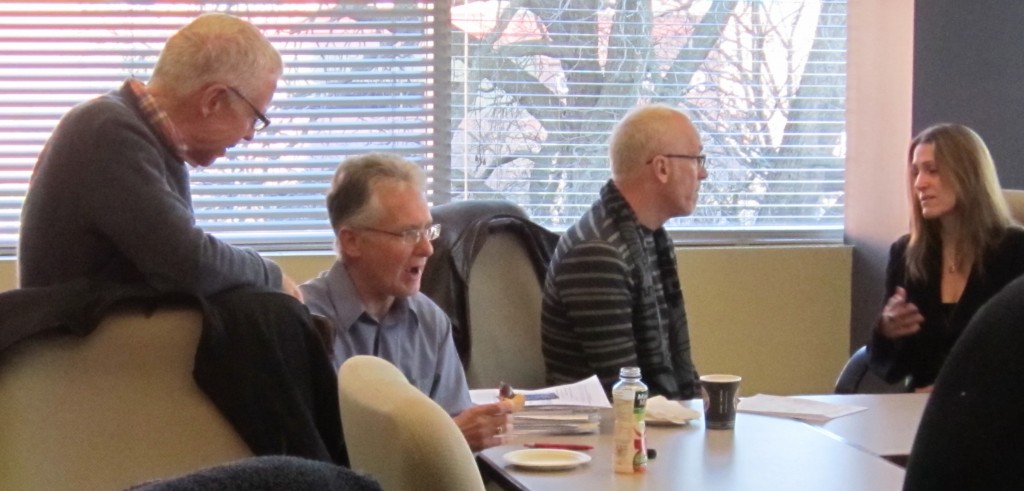 Expected to take part in the “new” Burlington Waterfront Committee are, from the left Bob Wingfield, Gary Scobie, Jeff Martin and Marianne Meed Ward, Councillor for Ward 2 who will chair the committee but not have a vote. And there you have it – the rise and fall of an Advisory Committee that spawned a few good ideas, and a whopper of a libel suit. The Pump House idea has gotten as far as the city advertising for expressions of interest. Those are now being evaluated and we could hear something around the time the pier opens in June. Any commercial venture will have significant short-term risk; longer term there is significant potential.
City council and staff have let themselves think someone is going to come riding in with a great offer that will not cost the city a dime. The level of risk is such that the city is going to have to come up with some serious coin – and we are nearing an election year. With the pier costing close to three times what it was originally going to cost and they have yet to contend with the legal fights that will get serious in February – don’t look for much in the way of appetite at council for a subsidy. Someone out there is going to have to get very creative and somehow squeeze a long, long-term contract out of the city – and maybe ask that a tax break be thrown in as well.
Have we been too tough on WAPAC?; expected too much of them perhaps? We don’t think so and we look to the Heritage Burlington Advisory Committee that is in the process of resolving a major community problem for the city. The working relationship between the city and the Heritage committee is superb; the Heritage chair has a strong working relationship at both the political level as well as with the bureaucrats. Jim Clemens talks regularly with the city manager. I doubt WAPAC chair Nick Leblovic even knew who the city manager was never mind meeting with him.
When the WAPAC committee members complain about how they were treated they might be well served to look at what Heritage Burlington has achieved and compare the leadership over there with the leadership they had. Had WAPAC had the courage to install Bob Wingfield as chair and then asked the city to give them another year to fix the problems – WAPAC would be celebrating today instead of licking its self-inflicted wounds.

 By Staff By Staff
BURLINGTON, ON. December 18, 2012 The province released a statement earlier today setting out, from their perspective, just what the issues are in the current labour differences between the province and the Elementary School Teachers Federation of Ontario as well as the Ontario Secondary Students Teacher’s Federation.
The province is just one side of the story. We have had email from several dozen parents with view points but there has not been an article they could comment on.
Here is the province’s position as sent to us by the Liberal Party of Ontario.
Appreciate that the Liberal Party is in the midst of a leadership contest and that the candidates will jockey for position and favour from those that have registered as members of that political party. It will be interesting to see what we get in the way of comment from the teaching profession.
I will bet a decent lunch that we hear from Cory Judson within an hour of publishing.
 Elementary school students in the public system have shut down schools for a day as they rolled out their strike action across the province. Do they have a tenable issue?
Since 2003, we’ve worked together with our teachers to raise student achievement — test scores and the graduation rate are way up and our schools have been called the best in the English-speaking world. When people talk about excellence in education, Ontario is part of the conversation along with places like Singapore, Finland and South Korea. This progress for students and parents was achieved in partnership with teachers — and that’s why we raised teacher pay and improved working conditions more than any previous government. Here’s what you need to know:
- Thirteen years of NDP and PC governments left Ontario’s teachers under appreciated, undervalued and underpaid. When we had the privilege of forming government in 2003, we made a commitment to improve teachers’ working conditions. And we did.
- Prior to 2003, teacher compensation had not kept pace with their contributions in the classroom. That’s why over the last nine years, teacher salary rates have increased by 22 to 25 per cent.
- Prior to 2003, teachers did not have enough prep time. That’s why over the last nine years, teachers have been provided four hours of paid prep time outside the classroom, up from about 2.5 hours.
- Prior to 2003, teachers did not have the support they needed to provide individual attention to our students. So we hired 13,400 more teachers to make class sizes smaller and 11,745 support staff to help. There are also 4,500 more specialist teachers now working in elementary schools, helping with music, drama, art and physical education.
- As some teachers now engage in one-day legal job actions aimed at our government, it’s important to note that the legislation they protest is the same legislation that will protect their wages, prep time and jobs for the next two years.
- The recession has left Ontario with a deficit, and the global economy is still uncertain, so we need to make wise choices, while protecting these gains in education. We choose to increase spending in the classroom and keep full day kindergarten while freezing teacher pay for two years.
- In February 2012, as we sought negotiations with teachers on a new collective agreement, we asked for a two-year pay freeze and an end to the practice of paying out up to 200 banked sick days upon retirement. It was a tough negotiation with one union taking their leave from the table after less than an hour of negotiating, never to return.
- Others persevered and the government reached negotiated Memorandum of Understanding with our Catholic and French teachers and some support staff. And as the school year got underway, we introduced the Putting Students First Act, Bill 115, which is based on these negotiated agreements.
The Hudak PCs have been clear — they’d cut full-day kindergarten, firing teachers and sending 4- and 5-year olds home. The NDP would give teachers a pay raise — they can’t say “no” to their union supporters, and that means they’d have to take money out of the classroom.
For the past nine years we’ve supported our teachers with real tangible things that they asked for — higher pay, more professional development time, better working conditions and increased time to prepare. We made things better for teachers and that’s made things better for students.
Now — as Ontario families and businesses work hard to overcome a tough global economy — we need to be fair to all Ontarians in recognizing what we can’t afford right now. And our government looks forward to working with teachers on the goals we share: building an education system that’s better for our students, better for our teachers and among the best in the world.
That’s the provincial governments position – what’s your take on all this?

 By Margaret Lindsay Holton By Margaret Lindsay Holton
BURLINGTON, ON December 18, 2012 The internet is changing us. It permeates nearly every aspect of our conscious lives. It is altering not only the way we think, but the way we perceive the world: past, present, future and dream-time too. Cumulatively, this is both a good and a bad thing.
But now is not the time to digress on a strident polemic ‘pro’ or ‘con’. Rather, in the short term, (and since you’re here anyway), consider these viral internet Christmas ‘treats’. To be sure, none would have the success they have had without our perpetual ‘clicks’ or ‘hits’. — Ho Ho. Surf’s up. (Remember to adjust your audio as you skip the adverts … )
 Author Margaret Lindsay Holton spent hour upon hour finding the gems that are set out below. I’m not sure why she included those terrible chipmunks in her selection but there are others that are superb. Enjoy Christmas Lights: GANGNAM style. 2 million hits, and counting. (Don’t shoot the messenger!)
Amazing Grace: Christmas Lights. Another festive folly at 23 million hits.
Trans-Siberian Orchestra: an adapted Pachabel’s Canon. Visuals include a few cheesy velvet paintings, but hey, who cares, it has near 4 million hits.
Again, Trans-Siberian Orchestra: The Nutcracker Suite (like you’ve NEVER seen or heard it.) Not as well known, but still pretty impressive at 250,000+ hits and climbing.
‘Santa Baby’ by The Good Lovelies (audio only) from Kingston Ontario. Obscure, with 4,000 hits, but delightful just to listen to their lovely harmonies.
Chipmunks Christmas: Jingle Bell Rock (audio only.) Ok, ok, it’s a stationary cartoon, but it’s still had 3 million hits. (Clearly many miss these delightful little animated high-pitched rascals…. )
 The internet certainly lets you get all the Ho!, Ho! Ho! you could ever want. Is there more? Christmas Carols by the Westminster Abbey Choir. Lovely choral arrangement with 118,000 hits. Not much of a visual, but again, this majestic music does impress, even on the web.
‘O Holy Night’ by Carrie Underwood. Guaranteed to send shivers down your spine, with the added bonus of sing-a-long script (… pity about the ‘devine/divine’ typos though.) The poor script and visual design may explain the surprisingly meager 124,000 hits.
A ten minute cosy wood-crackling fire with 2.5 million hits. (Time now for you to supply the Hot Rum Toddies or spiked egg nog.)
 Let us not give Santa all the credit for the Season. There was someone amongst us long before the sales people invented Santa Claus. There is a real reason for the Season Why all this ‘feel-good’ webby Christmas fuss? Well, seriously, there was this child born approximately 2012 years ago. The Story of Jesus Christ: Full Length Movie (2 hours). With a paltry 214 hits.
Draw your own conclusions …
Merry Christmas One and All.

 By Pepper Parr By Pepper Parr
BURLINGTON, ON December 8, 2012 Parent of elementary school students are ticked over the now more than probable possibility that the people who teach their children will go on a one day strike.
The province’s high school students are “mad as hell and not going to take it anymore” and plan to take their own actions.
 Will Nelson high school students be on the streets next week? The social media within the high school sector is abuzz with plans to just not walk into the high schools on Monday of next week. There is no one spokesperson for the movement; there doesn`t appear to be a focus but that`s the way today`s youth works; they have their own network that runs beneath the radar screen. They organize themselves differently.
But what if all the high school students at Nelson High and Robert Bateman High on New Street just lined the sidewalks holding hand written placards saying we won`t be students until you guys behave like teachers!
 Could Robert Bateman students join Nelson High students in a city wide high school students walkout? Imagine seeing two groups of a couple of hundred students asking that teachers just do the job they are paid to do, rather well paid we might add.
 High school students have taken to the streets in the past to make their point; in this situation the Robert Bateman High School made their point. Could be interesting. If you see crowds of students on the sidewalks on Monday – honk your horn in support, This mess within the educational system has to be resolved – teachers do very, very well and need to understand the economic reality the province faces.
The McGuinty Liberal government was very good to the educational system when times were better. Class sizes were reduced; all day kindergarten was put in place. McGuinty was an “educational” Premier. Time for the teachers to take a break and let someone else stick their snouts in the trough.

 By Pepper Parr By Pepper Parr
BURLINGTON, ON November 6, 2012 — The environment, global warming – yeah, yeah, I know. Those icebergs that are falling apart way up north. And the hot summer – it all means something – at least that’s what they tell us…but then there are those who tell us it is just a phase the earth is going through.
I know there is something different about the weather – it was certainly hotter last spring and that false signal all the tender fruit trees got put a big dent in the fresh fruit market. But was that global warming or was it just a weird stretch of weather?
Sometime we need a big bold signal. And that was what Bloomberg’s Newsweek magazine said with its cover this week.
It was also a part of what Metrolinx CEO Bruce McCuaig said recently about GO transit capacity and the crucn we are facing as the Region grows by 100,000 people each year. Then he made a statement that stunned me. He said “A full 70% of residents in the GHTA never use transit.”
GHTA means the Greater Hamilton Toronto Area. I checked with the GO press relations people to be sure that number was right. It was.
GO ridership has increased 21% over the past five years and at peak times is operating at 110% of capacity. McCuaig adds that “without at least doubling transit mode share, the average daily commute will jump from 82 to 109 minutes in 25 years. In rush hour, using the QEW to get to downtown Toronto the commute is easily 90 minutes. Being able to use the HOV lane cuts that quite a bit – but that lane is certainly not anywhere near its capacity.
After reading the McCuaig comments my mind went back to that Newsweek cover and suddenly the dots were connected. It is the environment – and we are stupid.
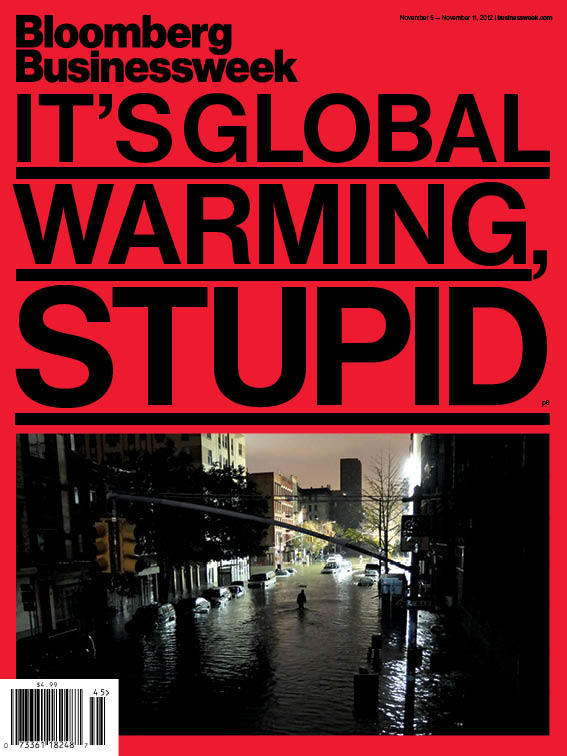 Bloomerberg Newsweek magazine cover – has the point been made yet? The article in the magazine set out the point and the problem.
When mainline media take on an issue and use their ability to put up stunning graphics you know something is amiss.
New York magazine had a very strong visual showing New York city with part of it in close to total darkness while other parts of the city had power.
Parts of Burlington were without power for a period of time – not short to those who had no light and a fridge that would only keep its temperature for so long.
What does a single person do. If you’re one of the 70% in the GHTA who hasn’t taken transit – there is a simple step you can take.
 New York city. This is what it looks like when the lights go out in a major city. Global warming? If you live in Burlington and you don’t drive and you are attending a city council meting and want to take part in the debate as a delegation you want to hope that you are up early if the list is long. I have seen situations where d delegation has had to leave because if they did not they would miss their bus.
Last budget the city took thousands of dollars out of the transit side of the budget and used it to “shave and pave roads that were said to be in serious need of repair.
We close down bus routes and limit the schedule. And we continue to build communities where a car is essential.
It is global warming and we really can be stupid – this time our stupidity has the potential to make it impossible to live on this planet.

 By Margaret Lindsay Holton By Margaret Lindsay Holton
BURLINGTON, ON September 28, 2012 You may recall the recent spat between the Mayor of Toronto’s brother, Doug Ford, and Margaret Atwood, famed Canadian literary icon. Aside from the eye-opening revelation that Mr. Ford had no idea who Ms. Atwood was, he and his brother, Mayor Rob Ford, on elected promises of tax cutting, were about to eliminate several community libraries. Quelle Horreur!!! The Twittersphere exploded. Facebook campaigns were hatched. Newspaper headlines joined the harangue. Canadian literati rose en masse and Ms. Atwood became their witty champion. A ‘Libraries-Are-Essential!’ REVOLT erupted.
And yet, really, have public libraries become a subsidized luxury that we, as a debt-ridden democracy, can no longer afford?
The naysayers say NO. They do believe public libraries are invaluable venues for all strata of society to not only access current information, but as research centres and repositories of our diverse social histories, local and global.
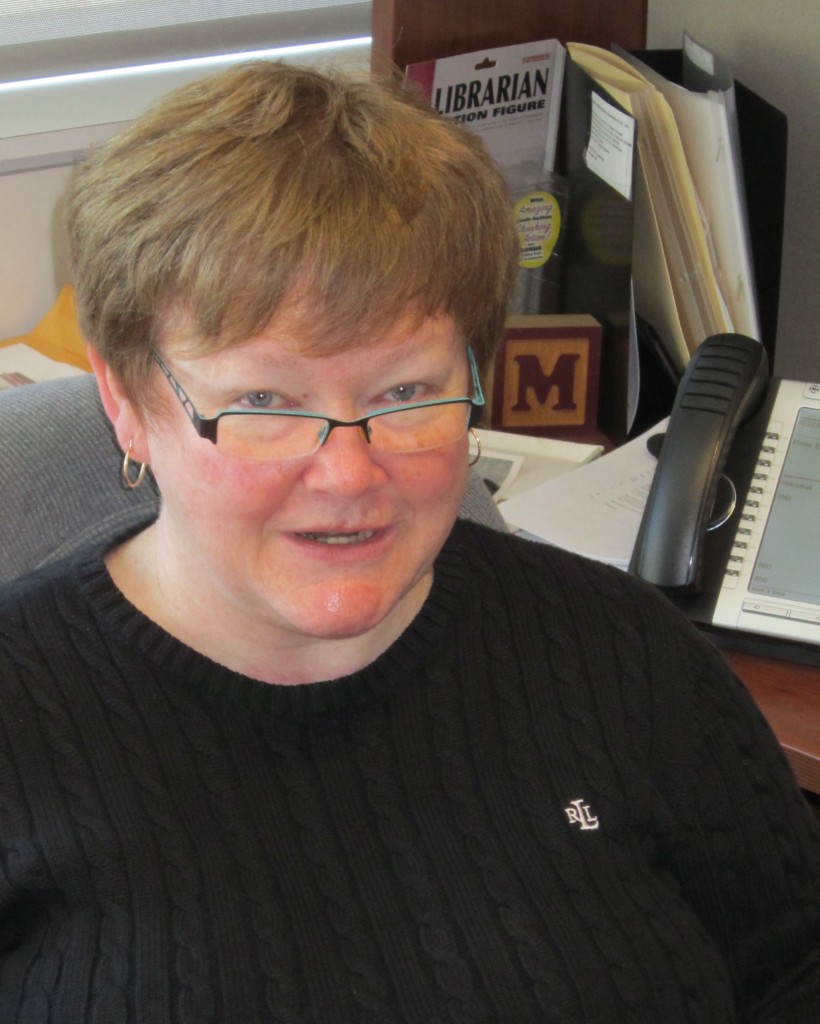 Maureen Barry, CEO of the Burlington Public Library and a consummate professional has overseen the move deeper into electronic media yet keeping real books on shelves. As Maureen Barry, CEO of the Burlington Public Library writes, “For 140 years, generations of Burlington residents have helped shape who we are and what we do.” She goes on, “Our thriving library system is a testament to the many citizens who have supported their public library as patrons and volunteers.”
Consider this. Public libraries as an IDEA of ‘free and open access to the public’ only really caught on in Victorian England. Prior to that, public access to cherished sacred and secular written texts – and a better education – was pretty much non-existent. Illiterate serfs remained illiterate serfs. Public access, of sorts, initially began during the violent upheaval of the French Revolution (1789-1799) when cleric manuscript collections and rich nobles’ private libraries were confiscated and became ‘state property’. Over 300,000 items became a part of the newly conceived national library, the Bibliothèque Nationale in Paris. “Old ideas of monarchy, aristocracy and religious authority were abruptly overthrown by the Enlightenment principles of equality, citizenship and inalienable human rights.” These principles were a natural outcome of the invention of the printing press during the 15th century. “The affordability of the printed word boosted the democratization of knowledge.” (Wikipedia) And that democratization became the cornerstone of today’s democratically inspired public library service, a service available to the general public regardless of wealth or education.
The first known library in Canada was established at a Jesuit seminary in Quebec City in 1635. The public were not allowed access. The first public library in Lower Canada was founded in Montreal in 1796, a mere seven years after the French Assembly in Paris published the first ‘Declaration of the Rights of Man and the Citizen’. The first public library in Upper Canada opened in Niagara in 1800.
It took another 100 years to build a proper public library in Burlington. But that did not stop the IDEA of a public library service taking root in this growing lakeside community within the newly hatched Dominion of Canada. Library services in Burlington began in 1872 when local public school trustees voted to spend $56 to purchase a suitable supply of books from the Toronto Board of Education. These books were placed in the reception hallway at the schoolhouse located on the southeast corner of Brant and Caroline Streets. Members, paying fifty cents a year, were able to access the collection for one hour on Friday evenings.
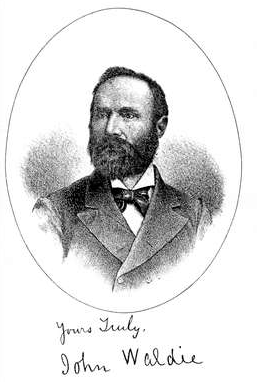 John Waldie, early library patron, was the MPP oversaw the merger of Port Nelson and Wellington Square into the Village of Burlington. It took the initiative and open-mindedness of a former local resident, of Scottish descent, to build the first ‘free’ public library. And he, John Waldie, did a lot more ‘community-building’ before he finally got around to doing that. During the course of a very successful career as a wheat trader in Burlington, then lumber merchant in Toronto, and as a re-elected MPP for Halton, Mr. Waldie was largely responsible for amalgamating the two lakeside communities of Port Nelson and Wellington Square into the Village of Burlington in 1873.
Several decades later, primarily through his broad-minded philanthropy, the first library in Burlington was built on Brant Street (on the site of the current City Hall.) It also shared the premises with the town offices and council chambers of the time.
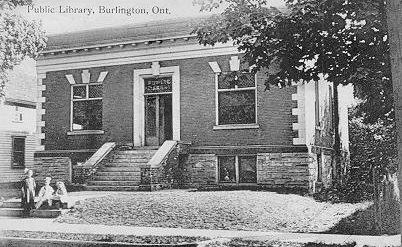 First Burlington Public Library on Brant Street, 1913. Current home of City Hall. Photocredit: Burlington Public Library Today, a 140 years later, with a somewhat staggering budget of $8.5 million (2011) allocated for staff, maintenance, IT acquisitions, and material book purchases and with a registered user base of less then half the population of Burlington, the public library could be seen as an expensive civic extravagance by the rest of the ‘unregistered’ city population. Begging the question again, are public libraries too expensive, especially in the age of the internet?
Let’s look at some other statistics provided by the library’s public relations department. In 2011, nearly 2 million items were borrowed from the library; nearly one million ‘unregistered’ patrons visited library branches; near 45,000 attended library specific programs; and over 100,000 information requests were fulfilled by library staff. All told, it would appear that this particular library, our library, for the monies allocated, is serving the regional populace very well.
There is no question though those libraries, like us, in this burgeoning internet era, have had to adapt. Today, Information Technology (IT) infrastructure at the library often consumes a greater proportion of the budget than the book acquisition fund. Within the BPL’s Strategic Plan (2012-2015) entitled: ‘The Next Chapter: Thinking Outside the Books’, the BPL intends to further improve functionality and accessibility “by upgrading the core computer system”. The new reality is that we are all increasingly ‘plugged in’. Like it or not.
In Alberta, city libraries charge patrons anywhere from $5 to $20 a year for library cards, but in Ontario, the Ontario Public Libraries Act forbids charging money for access to a library or for borrowing books. There are, thus, few other options for generating revenue aside from taxes. All the more reason for the BPL to provide exemplary ‘connected’ library services to the tax-paying ‘plugged in’ public.
Many would argue, (myself included), that libraries, regardless of spiraling IT and staff costs, continue to provide an irreplaceable democratic role within our young Canadian society. To close them in the name of the ‘global’ internet, would not only close access to those who cannot afford purchasing a private library or pay for monthly internet access, but closure would diminish the nurturing lifeblood of local vibrant communities. Communities coalesce within the ‘free and accessible’ democratic framework of library branches. Public libraries are fundamentally a democratic institution. And one sign of a diminishing democracy would be the closing of community libraries.
It is hard to imagine the lack of an element that we take so much for granted today: electricity. This means of illumination only became available to the general public at the beginning of the twentieth century, (about the same time that Waldie donated thousands of books to form the backbone of the Burlington Public Library.) Today, we plug in, bounce around on WIFI, and unthinkingly consume megawatts of purchased electrical power to illuminate our expensive laptops and computers. Primarily, we use this bought power to read items for work, school or pleasure: briefs, newspapers, text messages etc, and increasingly, e-books. But, worth asking, what happens if the power goes out, or, Harper forbid, the economy collapses? Communities, without the resources of their public libraries, would suffer profoundly.
Free e-books were first developed in 1971 by the late Michael S. Hart, founder of Gutenberg.org. More here:
The greater question remains, can we, as Canadians, AFFORD public libraries? The time and money we privately expend on consumer-electronic portals is far greater than any we physically devote to our library. Likewise, some would say that television, YouTube and the ubiquity of photo imagery – (‘A picture tells a thousands words’) – have usurped literacy altogether (a la Doug Ford).
 Child reading And yet, on closer examination, it is clear that the fundamentals of literacy remain the same for all times and for all ages.
Creating strong narrative arcs to teach and to guide, and using potent language effectively to inform and advise, are the results of a solid education grounded in the basics of reading and writing. Learning how to think is built on the constructions of other’s better words. Their thought-filled written scripts funnel our curiosity and creativity so that we, in turn, develop new insights and pass on our know-how. In that regard, the story-telling cuneiform clay tablets of Sumer dating back to 2500 BC really are the antecedents of the trendy ‘tablets’ of today. The difference is that ‘being literate’ now involves additional skills beyond reading and writing: one must also become computer literate.
As much as the internet does increasingly pre-occupy our time, attention and money, a successful public library providing popular library services – as a kind of ‘out reach’ extension of a nurturing public school system – continues to constructively guide our ever-inquiring minds. As many also well know, a well-directed search or inquiry through the library is a welcome antidote to the growing anxiety iDisorder of ‘E-Information Overload’. The library has an information service many find useful: – Just Ask-a-Librarian: It is not surprising that the Burlington Public Library website was visited over 1.5 million times last year. That works out to over 4000 ‘hits’ per day. Yes, active minds seek answers.
Rather than redundant or too expensive, public libraries have become increasingly necessary filaments that maintain the democratic ideals espoused by our freedom-fighting democratic forefathers. Without them we would also become increasingly disenfranchised from the roots of our very real earth-bound communities. As vibrant hubs of community service, public libraries today provide much more than free access to current newspapers, periodicals, CDs, DVD’s and books. They also offer early reading programs, computer access and training, literacy tutoring for children and adults alike, and a safe haven for ‘intellectual freedom’. Altogether, they augment the basic tenets of our democracy.
The mission statement for the Burlington Public Library states, “Enriching Burlington by supporting 21st century literacies, lifelong learning, and community connections.” Yes. That is what they do. As Ms. Maureen Barry so aptly writes, “Our public library is truly a dynamic civic commons. “ Yes, that is what it is. All the more reason for us, within the larger community, to continue to support and promote it. Because, as much of the rest of the war-torn and weary world knows: if we don’t protect and use this hard-won democratic ‘freedom’, we just might lose it.
Fiscal prudence and long term accountability must, of course, be continuously evaluated and considered. Cutting back on some library services might be necessary in the days ahead, but never, ever, must we contemplate cutting out our public libraries completely.
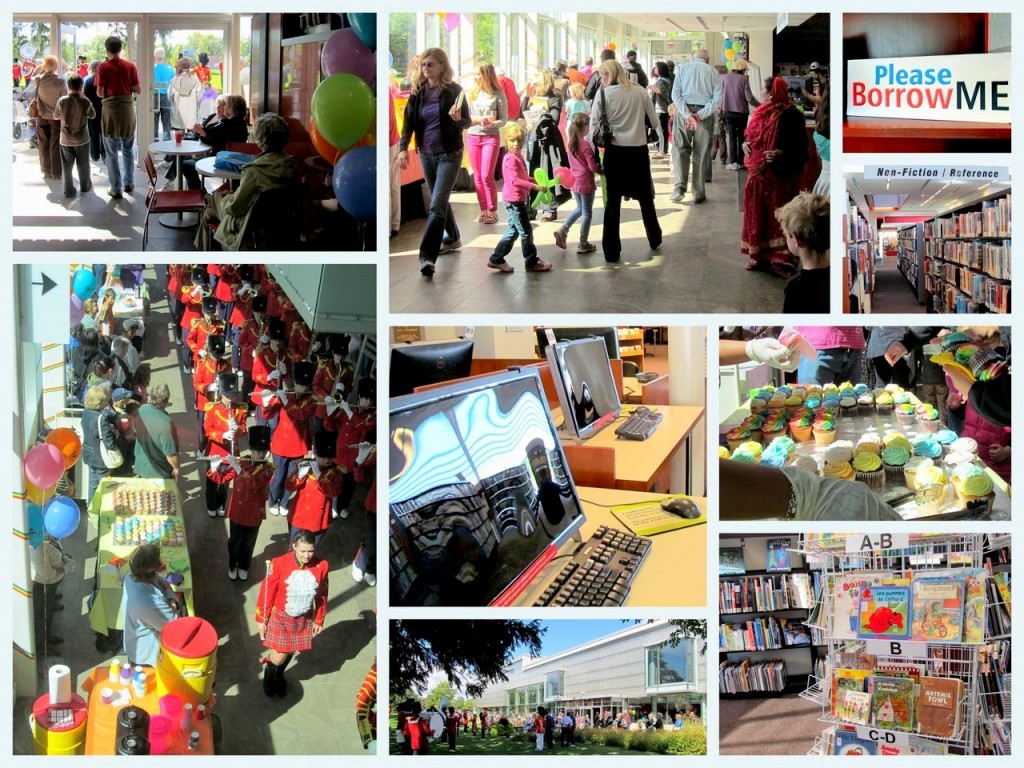
And now, a bit of fun.
The Top 100 Books of All Time.
For those who prefer non-fiction: The Top 100 Non-Fiction Books of All Time –
Better yet, JOIN The Burlington Public Library.
It is FREE, still, for those who live, work or pay taxes within Burlington.
Also coming up at the Burlington Public Library on September 29th: The Human Library. Eleven men and women, of diverse backgrounds, some from oppressive totalitarian regimes, use the ancient arts of ‘story-telling’ and dialogue to break down barriers of prejudice that have shaped their lives. Their stories of disenfranchisement – and ultimate survival – continue to open our minds to the challenges of our ever-evolving humanity. Book your half hour with an engaging living person.
These stories remind us all of the on-going preciousness of an open-minded community-orientated democratic public library service in Burlington, and in Canada.
Margaret Lindsay Holton is both an environmentalist and a community activist. She is an artist of some renown and the designer of a typeface. She is also a photographer and the holder of opinions, which are her own, that she will share with you in an instant. She appears as an Our Burlington columnist every two weeks.

 By Margaret Lindsay Holton By Margaret Lindsay Holton
I recently moved. And, as anyone who has been through this anxious ordeal knows, moving, if not carefully planned out, can be a logistical nightmare. In preparation, I had meticulously prepared what was going where, sorted which boxes were to go to what specific location, marked said boxes for the movers in black and red markers, and basically got ‘mover ready’. I was determined to leave behind a clean empty house.
Two items were of concern. I was taking two appliances with me. Item one was a 1997 washing machine (worked perfectly) and item two was a bulky Maytag refrigerator that had a deep lower fridge portion, (which I liked and wanted.) Both items were large, cumbersome and very heavy. Both were going to need two strong movers using an appliance dolly to get them out.
I measured the door opening between the kitchen-dining room area to make sure that the appliances would fit through on route to the truck, and discovered, yes, the washing machine would fit, no problem, but no, the fridge frame was too wide by a quarter inch. Thus, the doors of the refrigerator would have to come off. In the basement, I found the prefect sized wrench to remove the door bolts and put it on top of the fridge, with a small plastic bag for the disassembled bits, ready too for the movers.
The big day arrived. On Wednesday, August 1st. at 9am, after emptying the contents of the refrigerator into a cooler, I went and got the 14’ U-Haul cube truck. I gingerly backed up the beastie so that the cavernous back would open up unfettered to the front door. I rolled the appliance dolly into the kitchen. I was ready for the ‘movers’. Everything was ‘on schedule.’
 Never argue with man and his tape measure. © Photography by Margaret Lindsay Holton Bonus. The first of three strong male movers arrived early. He asked me what I wanted him to do first. I told him that the doors on the refrigerator had to come off so that it would go out the kitchen into the dining room to get to the front door and out to the truck. He looked at the door opening and said, “Naw. It will fit. Just remove the refrigerator handles, not the whole doors.” I handed him the tape measure, and said, “You might want to double check that.” Miffed that I would challenge his perceptual acuity, he briskly measured the width and depth of the fridge, and measured the width of the door opening. “SEE?” said he, “Lots of room! We only have to remove the handles, not the entire doors.” “Are you SURE?” said I. “ABSOLUTELY”, said he, as he pointedly placed the tape measure back on the counter.
If there’s one thing I’ve learned over the years, never argue with a man and a tape measure. I left him as he began to remove only the refrigerator door handles and went upstairs to finish tidying up there.
When I returned to the kitchen, the two other movers had arrived. All three of them were trying to jimmy the now handle-less refrigerator strapped onto the appliance dolly out through the kitchen-dining room door opening. The dolly was screeching back and forth on the kitchen linoleum as they took one run after another. All were giving instructions: ‘Go left a bit. Go back a foot. Go right 2 inches. Got it here. Go forward. Go left a few centimeters. Go back.’ But still, the refrigerator would not fit through. I meekly suggested that maybe they should take off the entire refrigerator doors. This suggestion was abruptly dismissed. Instead, the MEN decided it would be “Easier & Quicker” to just remove the kitchen-dinning room door off its swing hinge, (rather than unstrap the securely bound refrigerator from the dolly.) I left them to it.
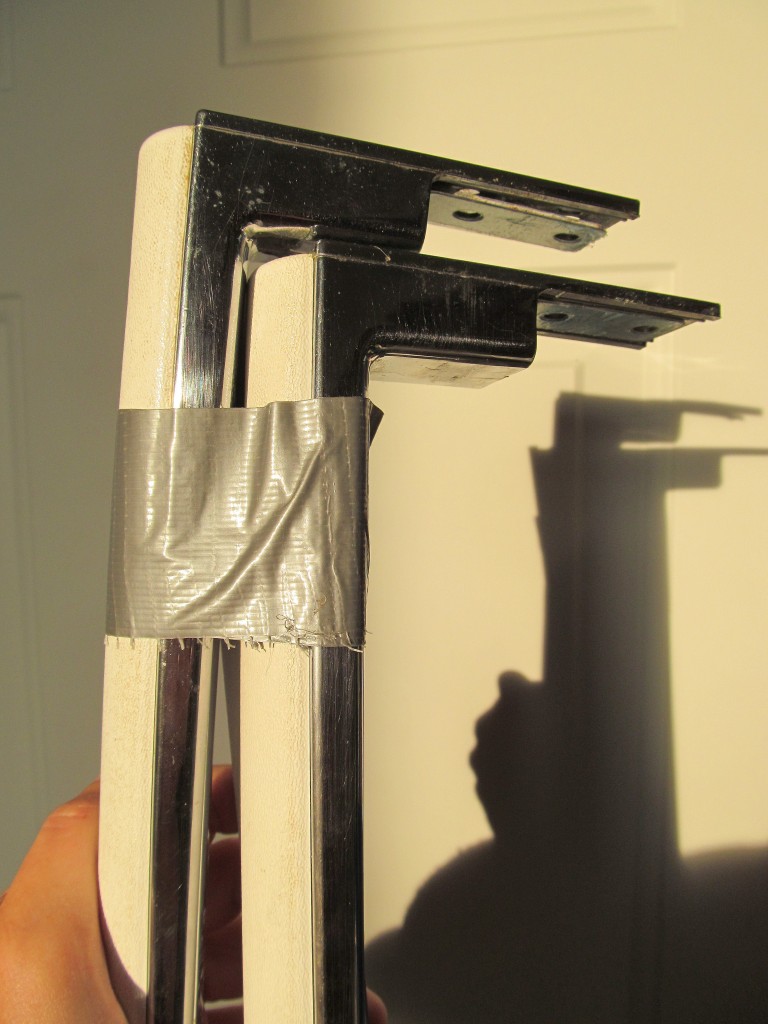 Door handles © Photography by Margaret Lindsay Holton An hour later, the move had ground to a halt. Two of the guys, (not the guy who had measured the refrigerator), were fixated on removing the kitchen-dining room swing door from its upper and lower sockets. That old wooden door, painted several times during the decades, was deeply embedded into the door frame. Without electrical tools on hand, prying loose those old painted over screws and pulling out those old embedded socket hinges demanded dogged determination and a strong set of hands. Another strong set were needed to hold the heavy door level. It was proving to be hard work just to get that door off.
And where was the guy who had so confidently said to remove ONLY the refrigerator door handles?
I found him, a big strong sweating man, on the other side of the swing door, in the dining room. He too had stopped carrying stuff to the truck. Instead, somewhat sheepishly, he was very carefully vacuuming up all the aged paint and wood bit chips that were flying off that stuck door and frame as the other two struggled to set that old door free.
It was a poignant vignette. In that instant, I concluded that men really are wonderful, even though they can be proud, stubborn and even a little bit pig-headed.
Margaret Lindsay Holton is both an environmentalist and an acerbic social activist. She is an artist of some renown and the designer of a typeface. She is also a photographer and the holder of opinions she will share with you in an instant. She appears as an Our Burlington columnist every two weeks.
—–

 By Pepper Parr By Pepper Parr
BURLINGTON, ON August 7, 2012 The city of Burlington publishes a magazine they call City Talk – they do that three times a year.
The city has the post office distribute the magazine to every home in the city – that costs a bit less than $20,000.
Based on our very limited research (sample of 75 people located in Wards 1,2 and 4) we found most people did not recall getting the magazine. When shown a copy, most have a vague recollection but don’t recall what they did with the publication.
Some – 32 of the 75 – kept the magazine until waste collection day and then threw it out.
The city has created a place on their web site asking you to tell them what you think.
Click and tell hem what you think.
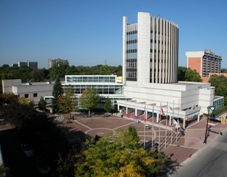 The city wants to know if they should continue sending you their magazine three times a year. If you say no they will be able to save $50,000 a year If you say yes – they will have to cut down more trees.
We think the part (about 50%) of the magazine written by the members of Council is a total waste of time. While somewhat informative the Council members do a better job with their web site newsletters. Councillors Meed Ward and Craven have excellent newsletters. Councillor Dennison is catching on. Councillors Sharman, Lancaster and Taylor either don’t know how to get a newsletter out or don’t care all that much.
Councillor Taylor has such an excellent relationship with his constituents that he hardly needs a newsletter.
The communications game is changing on a monthly basis and the city struggles to keep up with the changes in the technology. Citizen Committees are not allowed to create Facebook pages for the people that are interested in what they are doing. If a committee wants to publish or publicize anything they have to work through a Clerk to get something on the city web site – where it is not always easy to find what you are looking for.
The city has made a commitment to upgrade its web site and has a specialist on staff to prepare for the implementation of new software that will eventually link city department reports to council meetings. No date on when we are going to see that implemented.
Burlington is still stuck in the world of print – getting out of that kind of a rut is easier said than done. You can help the city but telling them what you think of City Talk.
We asked the public affairs at city hall how the survey was going and if they would be releasing numbers when the survey ended.
Here was the response:
If we need to, we may have the survey open longer than Aug. 10. If so, we would let people know that it is being extended. If we do not achieve high enough numbers, we will keep going until we do.
Help these people – do the survey and put them out of their misery

 By Pepper Parr By Pepper Parr
BURLINGTON, ON July 27, 2012 Municipal elections have fixed dates in Ontario and the tradition has been to get out on the campaign trail mid-summer and then ramp things up in the fall with the hard push in October with the ballots cast in December – but Burlington`s Mayor appears to have looked at his prospects and decided he needs an early start.
The next municipal election is not due until December 2014 – but some residents saw a piece in their mail box that looked like an election pamphlet to me.
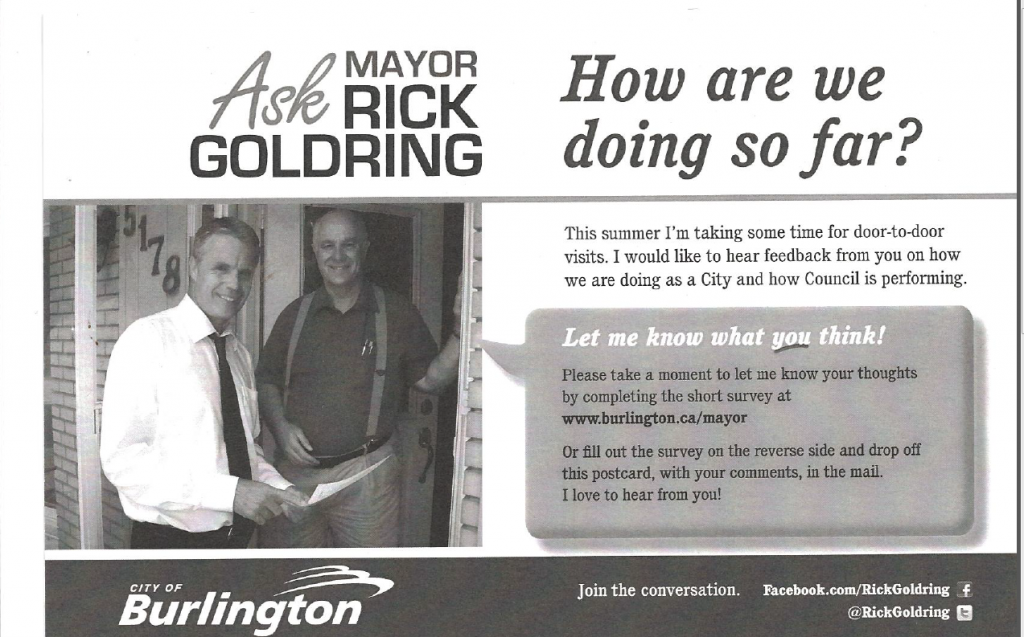 The Mayor says he dropped by the house – I wasn’t home. Documents like this were dropped off at 500 homes – tough weather to be out going door to door. The Mayor announces that he dropped by, but I wasn’t in, and he wants my opinion on key issues – which he sets out on side two of the printed piece.
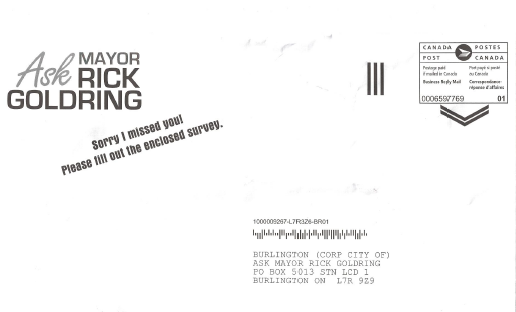 While the envelope was convenient – the address on it is city hall. If this is pre-election material, and it could certainly be described as that, the postage costs has to be absorbed by the Mayor personally. Included is an envelope I can use to reply to the small survey. The return postage is pre-paid with the envelope going back to the city.
What would prompt the Mayor to do such a mailing at this time?
Professional politicians – and that`s not an insult – make a point of keeping their ears, eyes and noses to the ground. It is essential that they pick up every nuance possible and be aware of the different, competing interests so that they can look for ways to balance those interests and develop policies that grow the city.
Is Rick Goldring now a professional politician? It would seem that way. He was a one term ward Councillor and ran for Mayor because he couldn’t stand the job the Mayor at the time was doing. He had no idea he would win, many people in the city didn’t really know the man.
What resulted in Goldring`s win was the level of distaste for Cam Jackson. No one knew how deeply people felt about Jackson and the job he was doing. A full understanding of the way this city works is revealed in any close study of the 2010 election results, especially when they are laid over Jackson`s provincial election results.
Politics is the art of the possible and while Goldring really didn’t know what was possible he did tap into a vein of Jackson resentment which got Goldring elected.
We then watched Goldring fit himself into the office of Mayor. He is close to that half way stage of his first term and has decided this is something he will do for some time.
Thus the mailing that was dropped off at a number of houses in the city. We are told that 500 of the pieces shown in this article were printed up. I’ve no idea why the Mayor dropped one off at my house – my guess is that he didn’t know where I lived. Had I come to the door when he knocked I`m not sure which one of us would have been more surprised. But I digress.
Mayor Goldring is clearly using the summer months to get a sharper sense of what the issues are and what the sensitive spots might be.
He asks about taxes, he wants to know what you think about the Strategic Plan (which I`m prepared to bet less than 500 people (outside city hall) have actually read. Not a word about the Pier, not a mention about the Beachway development; nothing about the downtown core and what we can do with what we have.
He asks about our rural areas but not a word about the Performing Arts Centre which is not as flaw free as many would like to think.
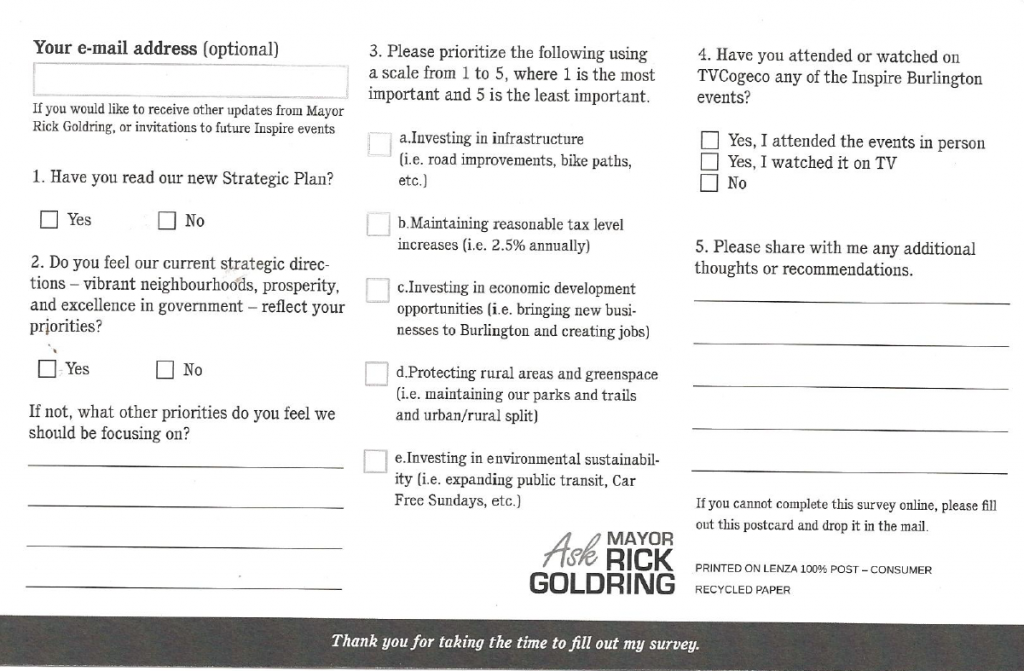 These were the questions the Mayor wanted to ask me. We could have had an interesting conversation. While this is just a survey, an attempt to get a sense of where people are coming from, the Mayor doesn’t appear to “champion” anything. What does this Mayor actually stand for? What is it that really matters to him?
During a Council debate he once said: This is not a hill I want to die on – clever phrase – but what hill is he prepared to die on?
Well, he didn’t want a casino in the city. He was so strongly opposed to gambling that he directed the city manager to reply to the Ontario Lottery and Gaming Corporation letter saying Burlington would take a pass on the opportunity to be considered as a Casino location and the opportunity to have slot machines in the city.
Many in the city would perhaps have seen merit in slot machines – didn’t matter. The Mayor was not going to have any of that here. It might have been more politic to have let people talk about the idea. There was no public statement on this that we are aware of – don`t know if the Mayor sounded out his fellow Council members on his response either.
There was no mention of the Official Plan review in the survey and while there was a very small mention of transit and the Car Free Sundays the city held, transit didn’t get the kind of attention many in this city thinks it needs.
Does the survey suggest what the Mayor`s priorities are? Probably too early to tell.
What the survey does tell us is that the Mayor is making sure he does his best to fully understand the lay of the political land he has to walk on.
Is “she” likely to run against him? She, being Ward 2 Councillor Marianne Meed Ward. Not a chance – unless something with the Pier goes terribly wrong – and then she will pounce all over Rick Goldring.
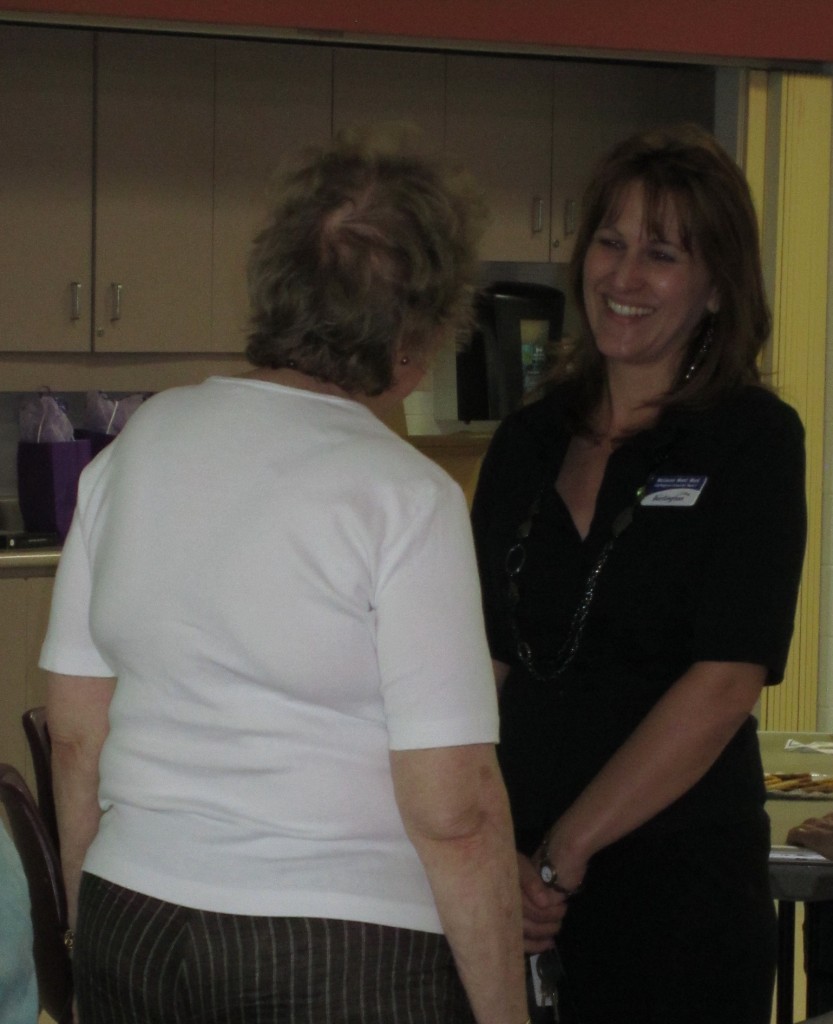 Meed Ward has a loyal following that isn’t really understood by her fellow council members. They feel she is doing the city more harm than good. Not a view shared by all that many people outside city hall.
Would she be a good Mayor – could be. Could she beat him ? – possible if he really screws up on the way he handles any problems with the pier. And make no mistake, there are problems with the pier and there are problems with the city`s legal case. Recall that the city sued the contractor for not completing the job. If the contractor can show that the job couldn’t be done with the plans he was given – that paints a significantly different picture.
Meed Ward wants the job of Mayor so badly she can taste it – but she is smart enough to know when she doesn`t have a chance of winning; and political office is so attractive to her that she will not risk losing her ward seat to take a long shot at the office of mayor.
Meed Ward doesn`t have one `friend`on city council, which doesn`t bother her all that much. She has an agenda – and it isn’t all that bad an agenda either.
Goldring on the other hand doesn`t have an enemy on council. He is conciliatory by nature and prefers consensus and will go some distance to get that consensus – but he does have a limit. Roman Martiuk, the former city manager, learned that the hard way.
It will take some very fancy footwork for the Mayor to step around the problems the pier construction and its legal case could become. We don`t know if there is going to be a serious pier problem – but the possibility is certainly out there and you know the people who are close to the situation huddle with the Mayor and the city manager regularly to get a grip on what is going on.
The Mayor hung on to his “official opening of the Pier during Sound of Music in 2013” for far too long. That suggests a bit of a tin ear when it comes to politics. His “quality over expediency” is a much better phrase for him to use as he speaks to people.
We don’t know yet how much of a hands on Mayor we have. He wanted the city manager, Council decided to hire and the two work well together. Jeff Fielding brings considerable depth in civic administration as well as tools that this city has not used in the past. He will make Rick Goldring a better Mayor than he would be on his own.
The legal side of the pier situation is being handled by lawyers the city hired. The lawyers on the other side are a bit tougher than the Toronto based fellows we hired. Many thought this case was one that had to do with simple contract law – we hired you to do a job and you didn’t do it – pay us for the damage you caused. It is turning out to be quite a bit more complex than that – the original contractor is claiming that the structure he was asked to build could not be built using the design he was given.
Contractors work from drawings they are given that have the seal of qualified and certified architects. The problem with the pier seems to be with those drawings. The original contractor is believed to be claiming that he had no control over the drawings. When a contractor sees an architects seal on a set of drawings – he must assume they are valid and structurally possible.
The city hired the design people. If they have a claim it is with the people who did the original design work.
Senior city staff continue to claim there were no changes to the specifications between those given to HSS and those used in the second tender that was awarded to Graham Infrastructure. That may not be completely true – but that will come out in the discovery process which is close to wrapping up – at least for one of the parties.
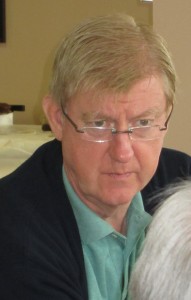 Obstreperous at times, noisy as well and leans a little more to the right than the demographic in his ward appreciates. Has developed some core resistance within the public transit advocates who could do him serious harm come 2014. Sharman didn’t win in 2010 – he just got more votes than the other guys – there is a difference. And he hasn’t managed to consolidate the base that voted for him 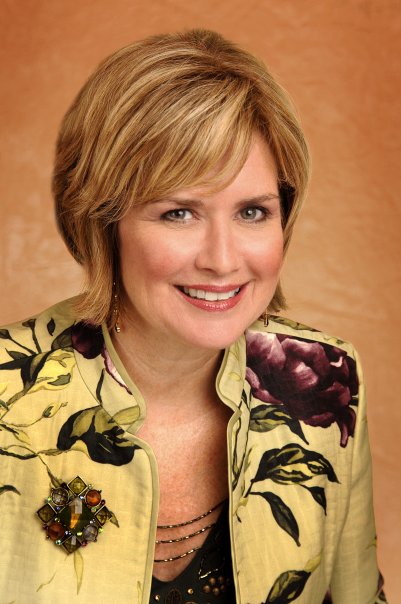 After many efforts to gain public office Blair Lancaster now has to learn how to develop a real working relationship with her constituents – she’s not there yet. At some point all this is going to come back to city council where we will see all kinds of posturing on the part of the politicians. Councillors Taylor, Dennison and Craven were part of the Council that decided the pier was a good idea. Councillors Sharman, Lancaster and Meed Ward were new and can`t have this one hung around their necks. The Mayor was the Ward 5 Councillor when the first layer of problems came to the surface – but he wasn’t part of the crew that made the decision to build the pier.
Come the 2014 election – there is the distinct possibility that Dennison and Taylor will not run again. Both have been in Council a long time; both are tired and a real mess might be something they will choose to avoid and take a well-earned retirement.
That could be a problem for Burlington. Dennison and Taylor have the best council experience. Craven is a strong council member and the pier mess doesn`t seem to have done him any harm. He has a solid base in Aldershot that probably cannot be damaged.
Councillor Sharman has several problems of his own on his hands. The transit mess is to a large degree his doing. Did we lose the Director of Transit because of the way Sharman treated her
Lancaster isn’t making the inroads she needs to make within her ward. She certainly didn’t earn the Dutch vote with the way she handled the naming of a park for our twin city Apeldoorn, and many of the people in the Beaudoin school district didn’t come away with the sense that their council member really went to bat for them..
Lancaster could learn a lot from Craven on how to serve and woo a ward. She will never do what Meed Ward does and she is going to need a strong identity with her ward if she is to win re-election in 2014.
When you look at the possibilities: Sharman and Lancaster could be in trouble. Dennison and Taylor could accept their gold watches and ride off into retirement. That leaves Craven and Meed Ward (no love lost between those two) and the Mayor who has a good working relationship with Craven but not much time for Meed Ward.
The Mayor is learning. Has he learned enough? Does he have the capacity to learn all that he has to learn? One wag very close to the political scene in this city made the comment that “the Mayor hasn’t turned out to be what we thought he would become, but he is the best we have and we need to make the best of that”.
That’s probably the best that can be said at this point in time.

 By Pepper Parr By Pepper Parr
BURLINGTON, ON June 19, 2012 Michael Yakimchuk, Director, BrightSky Power Renewable Energy Co-operative, an organization that has been trying to get a roof on the building of some city owned property on which to set up solar panels to generate electricity that will raise revenue for the BrightSky shareholders. He hasn’t been able to generate much interest at the Burlington Hydro level and the city isn’t exactly making his objective easy.
BrightSky is all for anything that will generate power without using fossil fuels. As strong environmentalists they have been following the story of the turbine that was to be part of the pier.
Yakimchuk says that when the story on the decision to kill the turbine part of the Pier, broke, I “was working for Hydro One Networks and part of my job was to determine the capacity available for renewable generation projects on Hydro One’s grid. That’s why I was surprised when I watched the City Council proceedings and heard that the turbine was being cancelled because the electrical system couldn’t take the power generated. I knew this was not true and I notified BurlingtonGreen immediately.”
 Is the vibration this turbine will create the real reason council doesn't want to see it as part of the pier? “It turns out that there was some miscommunication between Hydro One & Burlington Hydro – I don’t believe the misinformation was deliberate. Most everyone should now be aware that there is indeed capacity available on the electrical system for this project. There is no need for batteries (this is a red herring) and the assertions that the project could end up costing taxpayers money or affecting the stability of the pier are completely unsubstantiated – this is a dead simple project.
I know that Burlington Hydro is not asking for their money back but I also know how the money was originally approved for the project (by Burlington Hydro) and how it was funded by the Ontario Power Authority (OPA).
It was funded out of the OPA’s energy conservation fund and there are specific rules around how that money can be spent. If the project ends up being cancelled, Burlington Hydro will have to fund the project out of net income which means less revenue for the city. In the end, Burlington tax payers will be burdened with the cost that should have been picked up by all Ontario electricity ratepayers.”
More and more of this story creeps to the surface.
Late in May, Yakimchuk wrote the Mayor asking that the turbine part of the project not be jettisoned but no one on Council seems to want to listen to the advice now available to them from people who know the turbine business inside out.
The plans being used to build the pier show a dual mode meter. The device is in the building – all it needs is a hook up to the appropriate electrical cables once the turbine is in place.
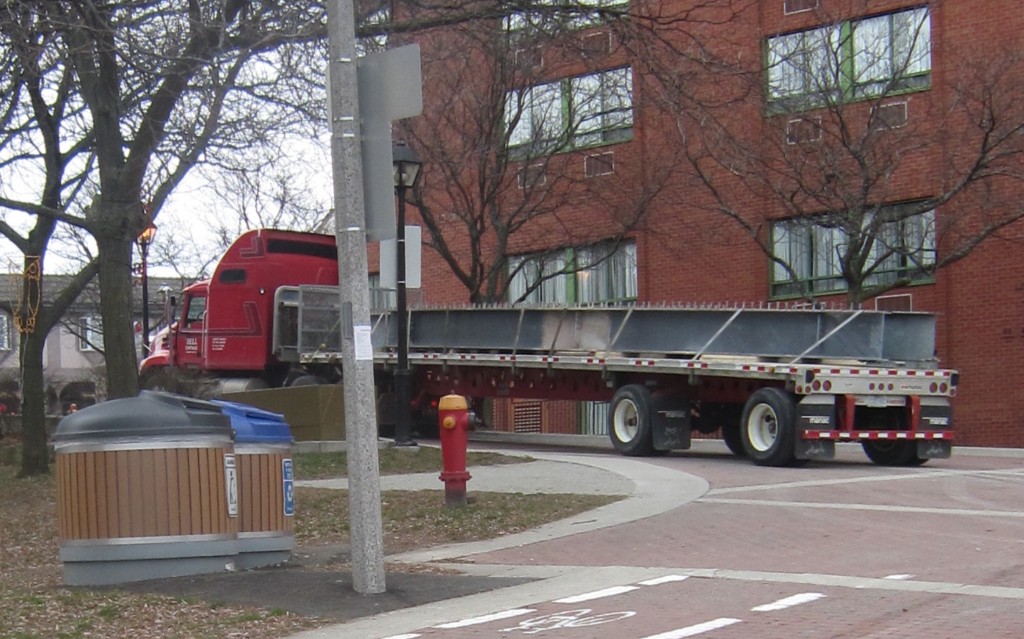 Steel beams that were deemed to be deficinet were trucked away late in December. Six months later, the beams to replace these are still not on the sconstruction site. Lots of questions as to why. What is coming to the surface now are the problems with metal fatigue that will result from the vibrations from the turbine. There are informed engineers who think that one of two things has to happen to the design: either the base on which the turbine is going to rest is beefed up with additional concrete (and some suggest that the pier itself could not handle the additional weight from that concrete OR that the base for the observation deck and the turbine go right down into the bedrock. THAT would be a design change.
Still a lot of questions around this issue. Is there something some members of Council know that the rest of the city doesn’t know? The pier has been a series of problems that can be overcome – but Council is going to have to be candid and transparent with the people who are paying the freight on this one.
All this confusion comes at a time when the city’s legal people begin the process of what they call “examination for Discovery.” This process is expected to last about six months with the first 90 days used to exchange documents. Each side asks the other for specific documents, and then each side gets to examine the other on the contents of the documents.
It is near the end of that process that the lawyers for each side take a hard look at the facts that have come to the surface and decide if it is worth going to trial and let a judge hear the case or if this is the time to make an offer and try to settle before any trial.
While there are more than half a dozen organizations who are a party to this mess – and each has their own agenda; there appears to be a consensus developing that suggests the city may not have the case it thinks it has. Too early to be sure. We will know before the end of the year.
Nothing happens in isolation. The city still talks in terms of the Pier’s official opening being part of the 2013 Sound of Music Festival. That would appear to be a very optimistic target date and one Council members would want to edge away from – if the date isn’t met they will wear that one. The lead up to the 2014 municipal election will begin late in 2013 and having the sour taste of a pier that wasn’t ready yet is not something any council member wants to have to explain. Watch for some council members beginning to distance themselves from the June 2013 date.
 Was she rtight all along? Turbine information is coming form all kinds of people - ciouncil seems to have plus in their ears. Ward two Councillor Marianne Meed Ward will of course come out of the pier mess smelling like a bunch of roses. She has always maintained that the city should have negotiated with the original contractor. Had we done that – we just might have had a pier and we would probably have gotten the finished product for less than we are going to pay for the latest version.
If the city has to shell out additional dollars based on a court settlement the lawyers agree upon – all hell will break loose.
The unfortunate part is that if there is a legal settlement that impacts negatively on the city it will have a gag order attached to it and you might never know what the true cost of the pier was.
So much for transparency.
Yakimchuk, in his letter to the Mayor points to “some important economic considerations.” He may not realize just how devastating those economic considerations could become.
Stay tuned – this isn’t over yet.

 BURLINGTON, ON June 2, 2012 There is something absolutely delicious about over hearing a conversation others are having about someone you know. Our parents told us it wasn’t polite to listen in and perhaps it isn’t polite – but we listen in nevertheless. And we can’t wait to pass on what we heard. BURLINGTON, ON June 2, 2012 There is something absolutely delicious about over hearing a conversation others are having about someone you know. Our parents told us it wasn’t polite to listen in and perhaps it isn’t polite – but we listen in nevertheless. And we can’t wait to pass on what we heard.
Our source for what follows is impeccable – we would trust our first born with this man. He was sitting in the lobby of a public building – attending a by invitation only event.
Two ladies of a certain age were seated nearby and noticed Burlington’s MPP Jane McKenna walk into the space and one said to the other:
Oh, it’s going to be one of those events – Marvelous Mike will be here soon too.
To which the second lady replied:
Where have I heard that – the Marvelous Mike thing?
The first lady explains – It’s on that web site, the one done by the guy with the white hair.
Yes, said the second lady. I don’t understand the thing. What does he mean by cheeky and irrelevant.
The first lady corrects her friend and says – he says : cheeky and irreverent.
Oh responds the second lady of a certain age.
And continue with
“Why does he always talk about the kimono having to be open?”
The first responds with:
I think he must have had a bad experience in a Japanese brothel.
Ms McKenna stayed at the by invitation only event.
Marvelous Mike was in Ottawa doing the nation’s business.
Pepper Parr has never been to Japan

 By Pepper Parr By Pepper Parr
BURLINGTON, ON April 23, 2012 The Joseph Brant Memorial Hospital shouldn’t have asked the Mayor of Burlington to take part in the visit the Minister of Health and Long Term Care Deb Matthews made to the hospital.. The Minister was playing crass politics hoping to shift any blame that might arise out of a failure to get their budget passed this Tuesday.
The provincial Liberals should not have targeted Burlington MPP Jane McKenna with the Robo Calls – served no purpose other than to confuse an issue. McKenna hasn’t been able to get her two cents worth in on the hospital issue which happens to be in her riding. While not a member of the government – she is the local MPP. The RoboCalls calls were a neat political shot that began when the Premier came to the city and ended when the Minister of Health descends upon the hospital to suggest that if the government falls the people of Burlington only have Jane McKenna to blame. None of this should have happened last week in Burlington.
The government is a minority one and they have to work things out with their partners. That the Progressive Conservatives have just walked away from the budget without hardly reading the thing reflects very badly on them – but there isn’t much that is going to change the minds of either Tim Hudak or Jane McKenna.
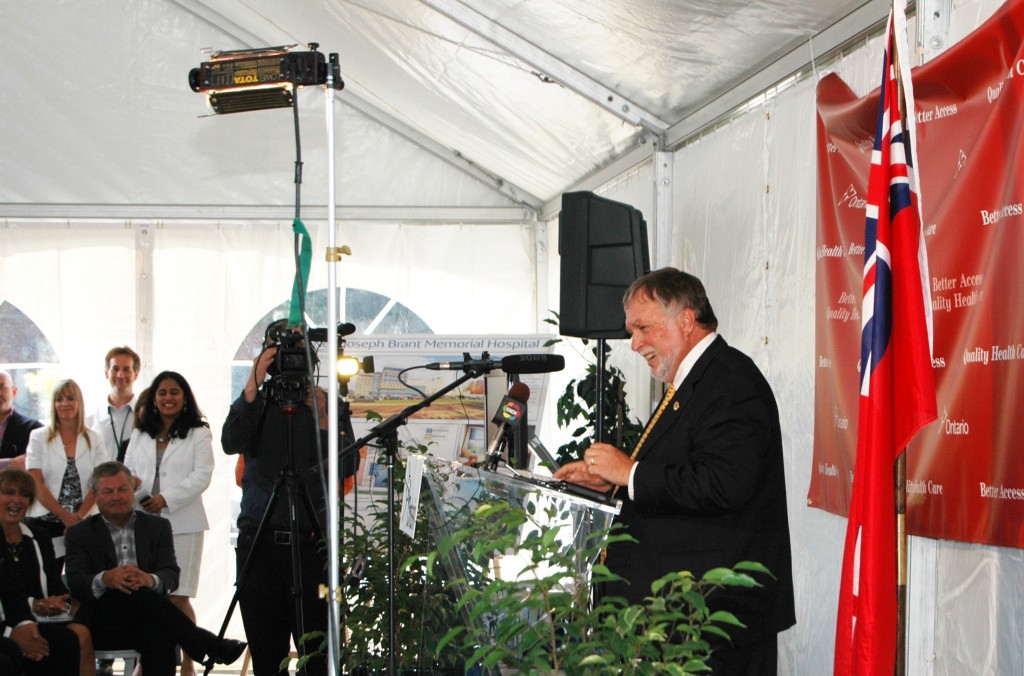 It was the day the Minister failed to show up with the cheque - but provincial minister Ted McMeekin sweet talked the crowd into believing it would eventually arrive. He's sweet talking the Mayor of Burlington these days. The old fox is still at it. The Mayor of Burlington should have explained to the hospital people who invited him that he had just come back from an appointment with his dentist where he had some root canal work and wasn’t going to be available. Your worship – you shouldn’t have let them sucker you into that one. Ted McMeekin , the Minister of Agriculture and MPP Ancaster – Dundas – Flamborough – Westdale played you on this one – not good for your reputation. They need you more than you need them.
Jane McKenna should have walked right into the meeting with the Minister and the hospital big wigs and confronted Deb Matthews and then publicly given out the Ministers home phone number and asked the 1,000 people that called McKenna’s office to call the Minister at her home and tell her to negotiate with the NDP. Show her that you can be just as silly and as stupid as she was. McKenna then might begin to negotiate with the government as well. The Progressive Conservative position on this budget is very weak and very juvenile. Rise to a higher standard Ms McKenna.
Ward 2 Councillor Marianne Meed Ward shouldn’t have attempted to reduce the funds needed to support the Burlington team that is going to negotiate with the hospital on the Contribution Agreement.
Meed Ward should either resign from the hospital board or at least recuse herself until the way in which city funds are going to flow to the hospital has been fully worked out and agreed upon by both sides. Or she should give up her Council seat and represent just the interests of the hospital.
Not quite sure how a municipal politician who speaks loudly and eloquently about transparency feels she can sit on two boards that are into some serious negations and working on a project that is bigger than anything this city has worked on in the past.
Mead Ward then went on to let everyone who didn’t read what happened at city council in local newspapers or on Our Burlington, published her views on her Facebook page:
 Is she talking out of the hospital side of her mouth or the city side of her mouth? Disappointed budget committee voted today to spend $50,000 on PR consultant to develop a communications plan on the hospital, and a few meetings with a legal consultant to draft our long awaited contribution agreement. Support the latter in principle, but it costs a fraction of $50k. Don’t support the need for PR program. Curiously, city’s press release on this decision leaves out the $50k price tag. Will post once it’s online.
The news release is now posted, and the costing has now been added at my request.
Support the need for legal expertise with background in working with Infrastructure Ontario to draft our contribution agreement with the hospital, worth no more than $15k (and that’s generous!), but we don’t need to spend extra dollars for the public relations/strategic communications firm which will bring the total tab up to $50k for the taxpayers.
Bad enough to make a serious tactical mistake but to show that you really don’t understand the issues just adds to the track record. Shouldn’t have happened in Burlington last week.
All three political parties will meet in the Legislature on Tuesday. The government will make the changes in the budget that the New Democrats will demand – the Liberals are after all a minority government and they have to share the power they have with the other political parties. The Progressive Conservatives have to accept the responsibility to accept their share of this minority government.
The budget will pass and the Liberals minority government will move on to running the province.
We are into a new week – let`s see if we can play nice this time and make better things happen for Burlington.

 By Pepper Parr By Pepper Parr
BURLINGTON, ON April 10, 2012 You can see the battle lines beginning to be drawn. The positions are being staked out. The issue will probably come down to – what kind of a city do we want? What do we want the downtown core to look like? What are we prepared to give up to get the development and the growth we need that will put some life into Brant Street?
Ward 2 Councillor Marianne Meed Ward has started to stake out her position with a piece she did in her on line Newsletter which got into the hands of a Hamilton Spectator reporter and showed up as a fairly long piece in the holiday Monday newspaper.
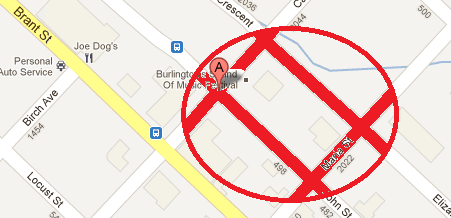 The development is to include the full block with a 17 story high rise, a parking garage and a medical complex. The issue is a development known as Medica One that has missed a critical deadline required in the application they made to rezone the property they had assembled at Caroline and John Streets. Because of the deadlines that were missed Meed Ward says the zoning application has to go back to Council – which is sort of back to square one and get fought out all over again. Only this time Meed Ward sits as a Council member and not just a delegate – and she appears to have the planner on her side as far as the technicalities go.
Meed Ward didn’t like the height of the buildings when she was just a citizen; she felt the buildings should have been set back quite a bit further to create a better street-scape; something people could relate too. At one committee meeting in 2009 she said: “City Hall and the developer have worked behind closed doors for two years, without the community at the table. The staff report only became available to residents June 14, which leaves little time for us to review and respond.” She was strident and focused then and she will be just as strident and focused when this comes back to Council.
Mayor Goldring agrees with Meed Ward on the technicalities. The city planner also agrees. The Mayor thinks there is a way to resolve the deadline problem. Mead Ward is going to be saying – “not so fast”. Bruce Krushelnicki, the city planner, is a stickler for the rules and he will insist that Council debate the original zoning application and make a new decision.
During the debate on this project back in 2010 when Meed Ward wasn’t a council member she had major problems with the height and with the way the proposed 17 story structure was going to relate to the street-scape. Add to that her concerns about the impact the building was going to have on the neighbouring streets.
And that`s where the differences come into play.
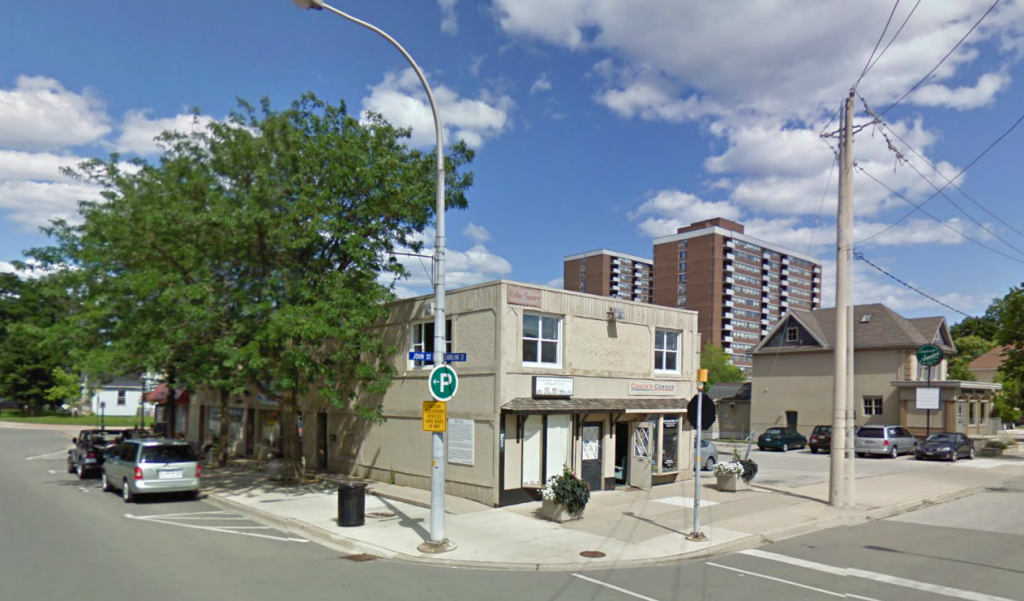 A city block with small one and two storey structures was to be the locale for a high rise project that some think the city needs while others feel the scale is out of proportion to the community. This could go to the OMB. Mayor Goldring believes the city needs development and that the downtown core needs all the help it can get. Meed Ward sees the health of neighborhoods as more important and this time she has a platform she didn’t have in the past. The city has to grow – the province set out the growth requirement in it’s Places to Grow policy. The city is desperate to create jobs, high paying, high tech jobs and Medica One was seen as the first new building that would attract and house those jobs. The complex was to consist of affordable units for younger people, a parking garage and a medical complex that would be close to the significant number of senor citizens in that community. Nick Carnacelli and his Garden Gate development company got the zoning changed he needed and then basically did nothing. Most of his time, energy and funding was put into a project he has going on in Hamilton.
Since getting the zoning changes he needed Carnacelli then went on to buy the Pearl Street Café properties and hold them for redevelopment. You can see a developer banking significant pieces of property – is there a larger plan, or any kind of vision. Doesn’t appear to be one.
However, it is evident that something is going to happen with the Riviera Motel property at the bottom of Elizabeth and that just might spark a burst of development in the downtown core. The Conservation Authority has given the Mayrose Tyco group a solid boot in the bum and told them to get on with the development or find themselves having to deal with more stringent water’s edge set back rules that will leave them with less property to build on.
Mayor Goldring complained on more than one occasion about the lack of any progress on the site.
Meanwhile, Carnacelli got OMB approval to add more height to his property assembly at John and Brant as well as more height for the property in the Old Lakeshore precinct where the two Lakeshores merge. Lots of capacity for future development but no shovels in the ground.
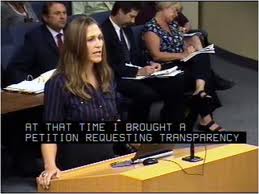 Marianne Meed Ward is on the other side of the podium this time - sits as the Council member for Ward 2 where a developer got a zoning change she opposed. There are those on the 6th, 7th and 8th floors of city hall who feel strongly that Meed Ward has harmed the city’s relationship with the developers and that several have put projects on hold or just not put shovels into the ground because of her intrusions.
The city needs the additional assessment – there aren’t going to be anymore of those large residential developments like Alton in the north east part of the city coming along. Meed Ward has always had a “thing” about developers – she wants to see them not just putting up buildings but developing in a responsible manner with more than just an eye to putting a couple of benches and a patch of green outside the building that rises 17 stories above the street.
She didn’t take a dime in election funding from developers last time and she won’t take as much as a nickel next time either. Expect developers to get together and talk about putting together a fund to defeat her in 2014. Can she be beat? Everyone can be beaten in an election but Marianne Meed Ward is a true civic fighter with a constituency that just loves everything she does.
There is though a significant number of people who can’t stand what she is doing. I continually get asked what I think about what she is up to. The people with perceived influence in the city don`t appear to have all that much time for Marianne Meed Ward. Does that matter?
Meed Ward has made a significant change in the way the city uses Section 37’s of the Planning Act. A section 37 of the Act allows a developer to pay a sum of money to the city in exchange for additional height and density in a development.
In the past these Section 37 agreements were worked out between the Planning Department and the developer. Meed Ward wanted the people who live in the community to be at the table when these Section 37 deals were worked out and not just hear about them when a decision is made.
The orchids on Upper Middle Road, west of Appleby Line are examples of Section 37 deals that Meed Ward wants to see come to an end.
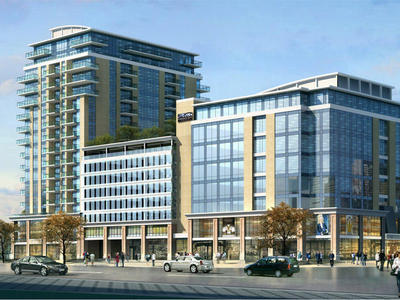 The developers dream. The Mayor's nightmare? The ward Councillors second chance. All this noise from Meed Ward was manageable by senior city staff when she was just a citizen delegating – now she has a platform and a much higher public profile. That hasn’t made her any friends at city hall – which doesn’t seem to bother Meed Ward. Her objective is to convince her ward constituents that she can bring about change and then take that message to the larger community.
With the city’s Official Plan about to begin the required five year review, expect to see Meed Ward front and centre promoting her view of what the city should be.
She seems to have a clearer vision than the Mayor – or at least we are hearing more of her vision. Add to that her courage – some would call it brash and stupid, but Meed Ward will call for a recorded vote and be the only person to vote for her motion – and do it three times in a row.
But the city knew, or should have known, that was the kind of Council member she was going to be. Former Mayor Cam Jackson was close to terrified at what Meed Ward would do as a Council member. That problem evaporated for him when he lost the election.
Rick Goldring is a different Mayor but he is facing a council member who wants the job he has – if not the next election then certainly the one after that. Can Goldring handle the onslaught for the next two and a half years? . He is going to have to improve his game on several fronts to keep ahead of Meed Ward. It will be fun to watch.
While both Meed Ward and Goldring are new to their jobs; Meed Ward as a Council member and Goldring as Mayor, who also has four years’ experience as a member of the Jackson administration, she is much faster on her feet than the Mayor. She is also far more media savvy than the Mayor.
At this point the Mayor is seen as the more solid of the two but Meed Ward wants that 8th floor office and she has lots of time to plan and build the support she needs. She has a clear vision; something Goldring might have but not one the public has seen.
At this point Goldring talks of having delivered on most of the campaign promises he made – not that many people can remember what those promises were.
Does Meed Ward have the lines she needs into the people with the money in this city? The developers certainly aren’t excited about her being Mayor but she has a dedicated ward fan club and she runs the best Citizen’s Advisory Committee in town and she has shown she can adjust her position to the prevailing winds.
She was opposed to the development of a parkette on the Elgin Street property where the city has a maintenance facility. Burlington had been discussing doing something similar to what was being done in our `twin`city in Holland. The Appledoorn city officials decided to hold off for a year due to financial constraints and Meed Ward thought that’s what Burlington should have done as well. Council didn’t see it that way and voted to proceed. So, while opposed, Meed Ward jumped in and made the project her own and is now deeply involved with architects and plans for the improvement of the area. It wasn’t necessarily a good idea – the site is too small and the facilities building has traffic that isn’t compatible with the children`s playground right beside the property.
She opposed the way the city decided to resolve the Pier construction issue – Meed Ward felt the city should have dealt with the original contractor and worked something out with him. She made her case – it didn’t hold and so being the trooper she is – she went along with the decision. She is however waiting to see just how much the city has spent on lawyers fees on this one. If the city doesn’t win it`s court case and recover all it’s costs – the howl from Meed Ward will be loud and long.
 She leaked or is believed to have leaked information to the media about the Pier (it wasn’t to us) and then had to deal with the ire of her fellow Council members on that one. She leaked or is believed to have leaked information to the media about the Pier (it wasn’t to us) and then had to deal with the ire of her fellow Council members on that one.
Does Meed Ward have the support of her fellow Council members on the Medica One development? Probably not. But the city has a Planner who is as ethical as they come – he will insist council follow the rules. This is going to be a three way play.
The Mayor will be for it and want to find a way to accommodate the developer.
Meed Ward will argue against giving the developer the same rezoning and demand that the city get much more for what the developer wants. If you have any doubt where Meed Ward is heading – read one of her recent community newsletters.
The Planner will stick to the rules – no fast ones with Bruce Krushelnicki.
As the motto on the city`s crest puts it: Stand by.

 Jane Irwin has the capacity to make a point incisively and with humour. Her submission to the Master Transit Plan team are set out below in a slightly edited format. Jane Irwin has the capacity to make a point incisively and with humour. Her submission to the Master Transit Plan team are set out below in a slightly edited format.
By Jane Irwin
BURLINGTON, ON March 22, 2012 I have used Burlington Transit for the almost 30 years I have lived in Burlington. On average, I travel by transit once or twice a week, which works out to 5 to 10 boardings per week. My most frequently traveled routes are (in numerical order, not order of frequency) 1, 2, 3, 4, 5, 6, 8 and 10.
I could not attend the public meetings because of time conflicts, but I have read the very extensive background materials online and have also read the comprehensive comments by Walter Mulkewich. The former Burlington Mayor is extremely well-informed on the topic of how transit planning is related to the future well-being of this city. His generosity in presenting his thoughts about Burlington Transit has provoked my writing to express my own more concentrated passenger viewpoint.
Travel choices are extremely important factors in three 21st-century urban goals:
to improve the city’s economic health,
to improve the health of its citizens,
and to improve the city’s environmental conditions.
Measured by these criteria, the preferred travel choices, from best to worst, are walking and cycling, transit, taxi and private car. In terms of cost, the choices are the same.
In terms of the travel time of a journey, the order is reversed: private car is fastest, then taxi, transit, cycling and walking.
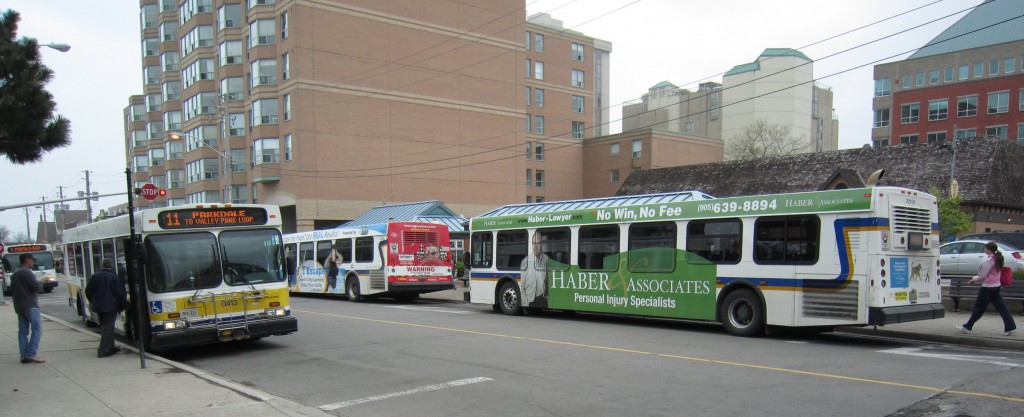 Transit in Burlington is undergoing a major review that will produce a Master Transit Plan with significant public input. The greatest opportunity for transit to compete for increased ridership is to reduce travel time to get from A to B. Everyone in today’s society appreciates more time.
The prime methods of reducing transit travel time include:
1) Greater frequency of buses, including shorter intervals for transfers.
2) Removing unnecessary bus stops ( co-coordinating bus stops with stop signs and lights).
3) More direct routes (not meandering hither and thither).
My own travel choices in recent years include walking, transit, taxi and private car. I stopped cycling 10 years ago because, in my experience, too many private car drivers in Burlington are careless of cyclist safety.
Drawing on my own experience, therefore:
1) Having to wait 60 minutes for a bus is a deal-breaker. A 30-minute wait for a bus makes other travel choices more appealing. BT should aim for a maximum of 20 minute intervals.
2) Here Irwin gets into a level of detail that will interest only those who travel the route but her point is still relevant.
Just as one example, the number 5 route west from downtown at John Street, along Ontario Street to Maple Avenue:
stop for left turn at Pine Street;
stop for left turn at Elizabeth Street:
stop for left turn at James Street:
bus stop and stop light for right turn at Brant Street;
stop for left turn at Ontario Street;
bus stop mid block;
stop sign for Locust Street;
bus stop mid block;
bus stop at Burlington Avenue;
stop sign at Hager Avenue;
two more bus stops mid block;
bus stop and stop light for left turn at Maple Avenue.
In my view, the stop sign should be moved from Hager Avenue (a 3-way stop) to Burlington Avenue (a dislocated corner, difficult for pedestrians), which should be a 4-way stop; and at least 2 bus stops should be removed. I will defer to traffic experts of course, but it seems to me an effort should be made to co-ordinate the facilitating of bus transit. It is also my view that the bus should travel on Elgin Street, thereby eliminating Ontario Street and the number 10 on Lakeshore. The Elgin Street bus stops would coincide with existing 4-way stop signs.
3) I visit Oakville on occasion, and I prefer their grid system.
For example, why not consider one Appleby line connecting with cross-town buses instead of current 5 itty-bitty lines. Walkers Line has no bus connecting Lakeshore and Fairview. Routes Brant Street 2 and Guelph Line 3 do not meet Dundas Street. BT on Dundas Street has three routes 6, 15, and 11, mostly between Walkers and Appleby Lines. Between Brant Street and Guelph Line, Route 2 meanders just south of Dundas, as do Routes 6 and 62 between Guelph and Walkers Lines.
It is really poor practice for neighbouring communities not to have joint transit on city border areas. Why not a Dundas Street bus from Brant Street to Oakville? The Oakville Dundas Street bus does not meet a Burlington bus.
Why not a bus from La Salle Park Road to Waterdown, taking a turn into Aldershot GO and VIA station?
Transfers on grid systems should be manageable with current technology, and therefore minimize delays.
Finally, in my experience, BT drivers are exceptionally courteous and helpful. The drivers are a great asset to Burlington Transit, and it should be recognized that their attitude is a factor in encouraging increased transit ridership. Congrats to BT for that!
The city’s Transit Advisory Committee doesn’t weigh in transit quite the way Jane Irwin does.
Ed note: This is not a lady to trifle with.

 By Pepper Parr By Pepper Parr
BURLINGTON, ON March 20, 2012 Jonathan Swift published all of his satire under pseudonyms – James Smith chose to be right out front and direct with his comments before a Council meeting that was getting ready to pass the Current Budget for 2012. Council was not pleased.
One of the bigger issues at Council was what to do with transit. Many feel that if a bus route runs empty half the time then the sensible business thing to do is shut it down and social responsibility be damned.
Smith, an architectural design director who specializes in landscapes and small environments who is also part of the team that is struggling to save the Freeman station from demolition went before Council to commend them for the Imagination, Courage and Leadership. That doesn’t happen very often so the media listened very carefully.
Smith said it took imagination to shave half a million dollars from the gas tax money that gets transferred to the city each year and plowing it into paving cul de sacs, which as he pointed out is a French word for a road that doesn’t go anywhere.
 Is there space on these library shelves that is empty? If so - the funds to pay for that space gets transferred to the shave and pave program. Smith was just getting wound up when he added, rather deliberately, that the gas tax, “despite what some may think, is not a Latte sipping, bike riding, transit loving, pink leftie tax” and it should be used for things that use gas. Council had previously taken a chunk of gas tax money and moved it out of transit over to their newest money saving tool, the shaving and paving of our roads.
Smith pointed out that he felt it took a great deal of imagination to present (with a straight face) a rationale for the use of funds designed to mitigate climate change to paving cul de sacs. He felt Council should be applauded for their courage in moving $500,000 out of transit to road improvements while the transit review is underway.
Leadership was given special treatment. Smith explained that it takes true leadership to make a commitment to public transit while insisting transit is run more like a business and requiring greater cost recovery and at the same time reducing investment. In the retail world, Smith added, “this is known as bait and switch”. Ouch!
 James Smith just might have come up with a way to use the technologically "swift"but financially expensive Presto Card to much wider use. Given these examples of Imagination, Courage and Leadership Smith took a page from Jonathan Swift to make what he called a couple of modest proposals. Shave and Pave the libraries he suggested. They are empty of people from time to time – shave and pave a few dollars from that service, it isn’t always used.
He went on to suggest there were other opportunities for a real display of courage. The washrooms and the elevators are not always used – but rather than close a few of them down, after all like buses they aren’t always used, require people to use their Presto card to get on an elevator or use a washroom.
James Smith just might be on to something here.

|
|
































































































